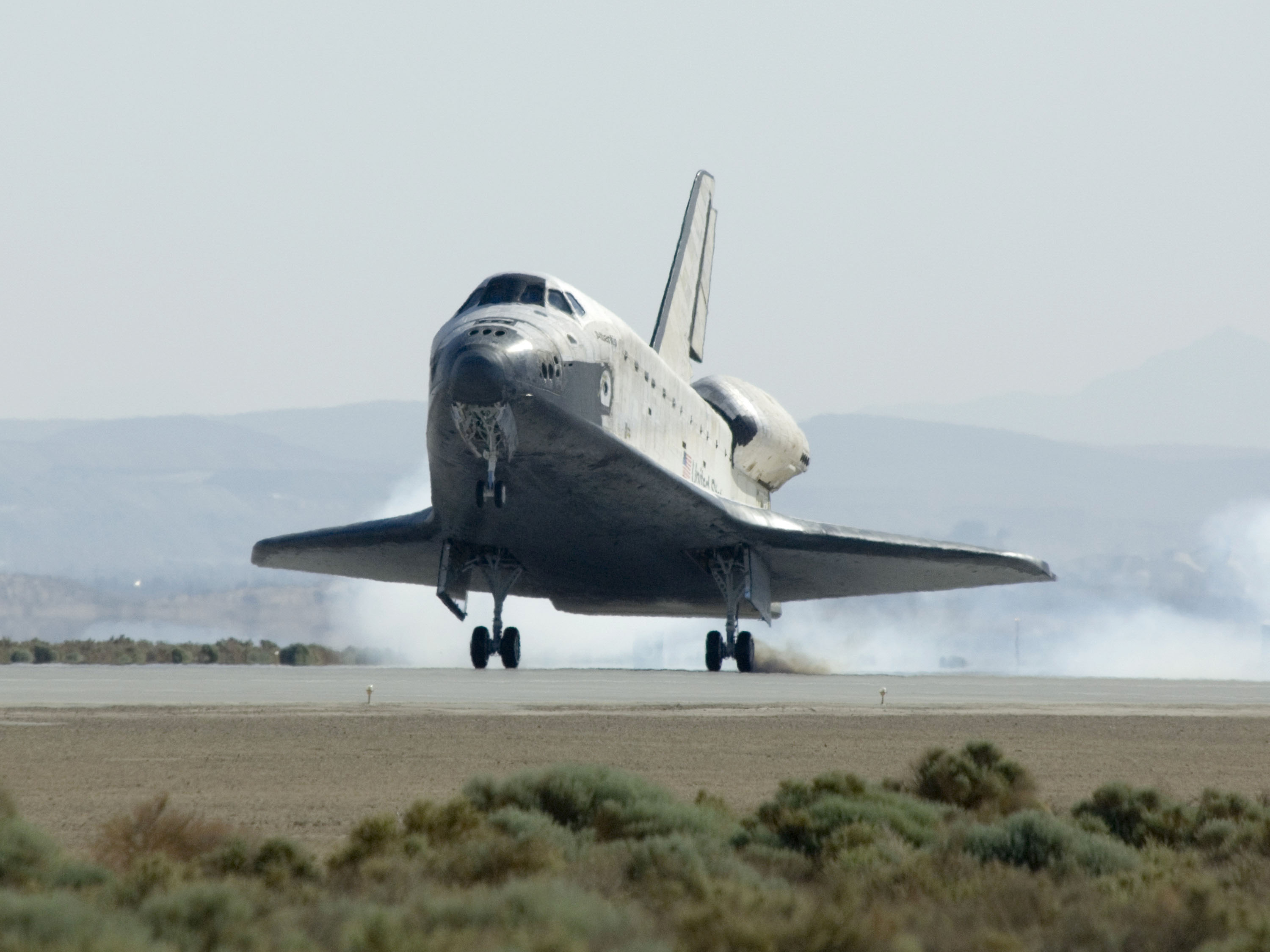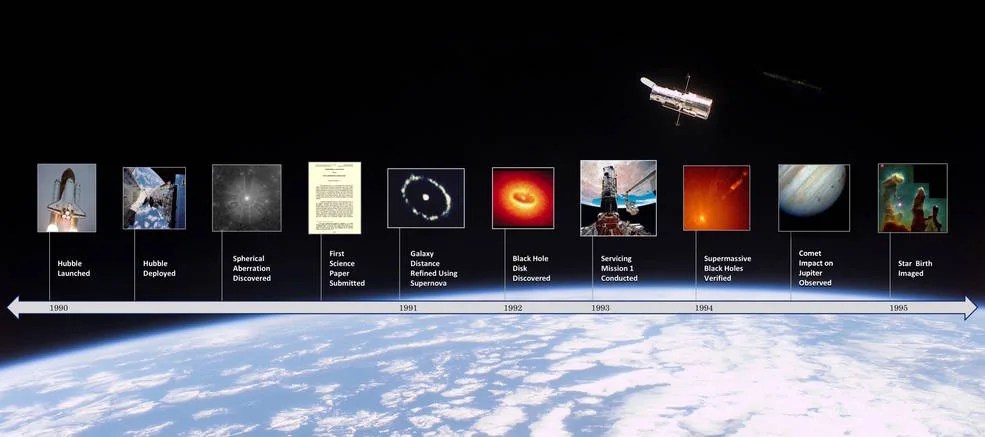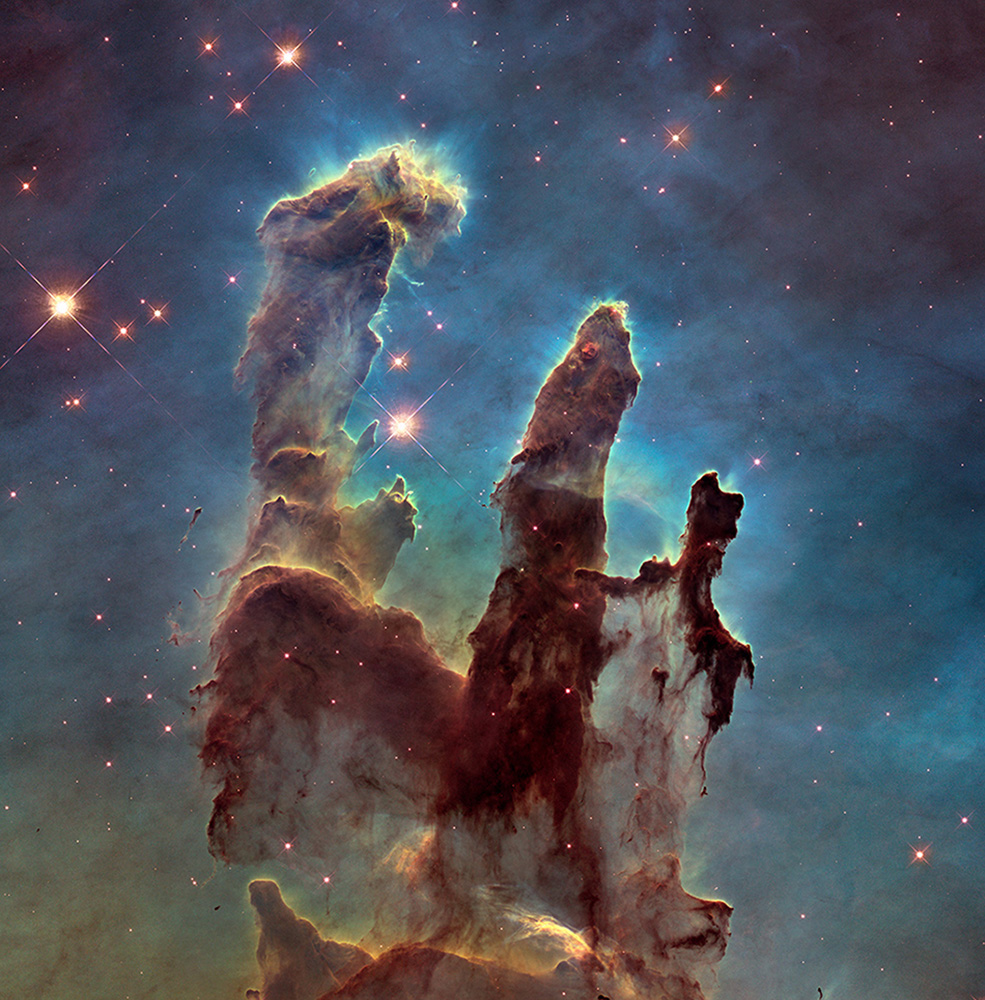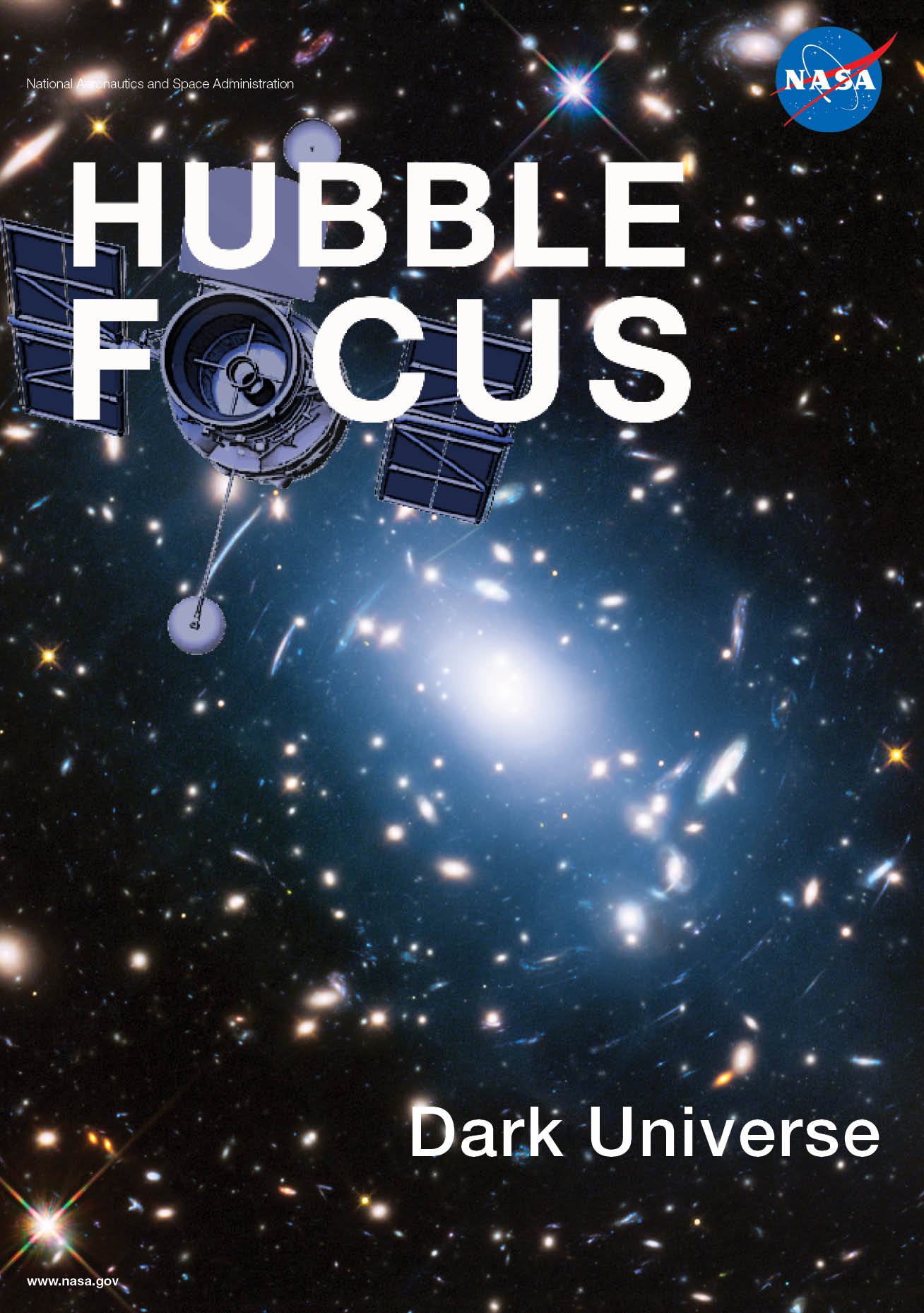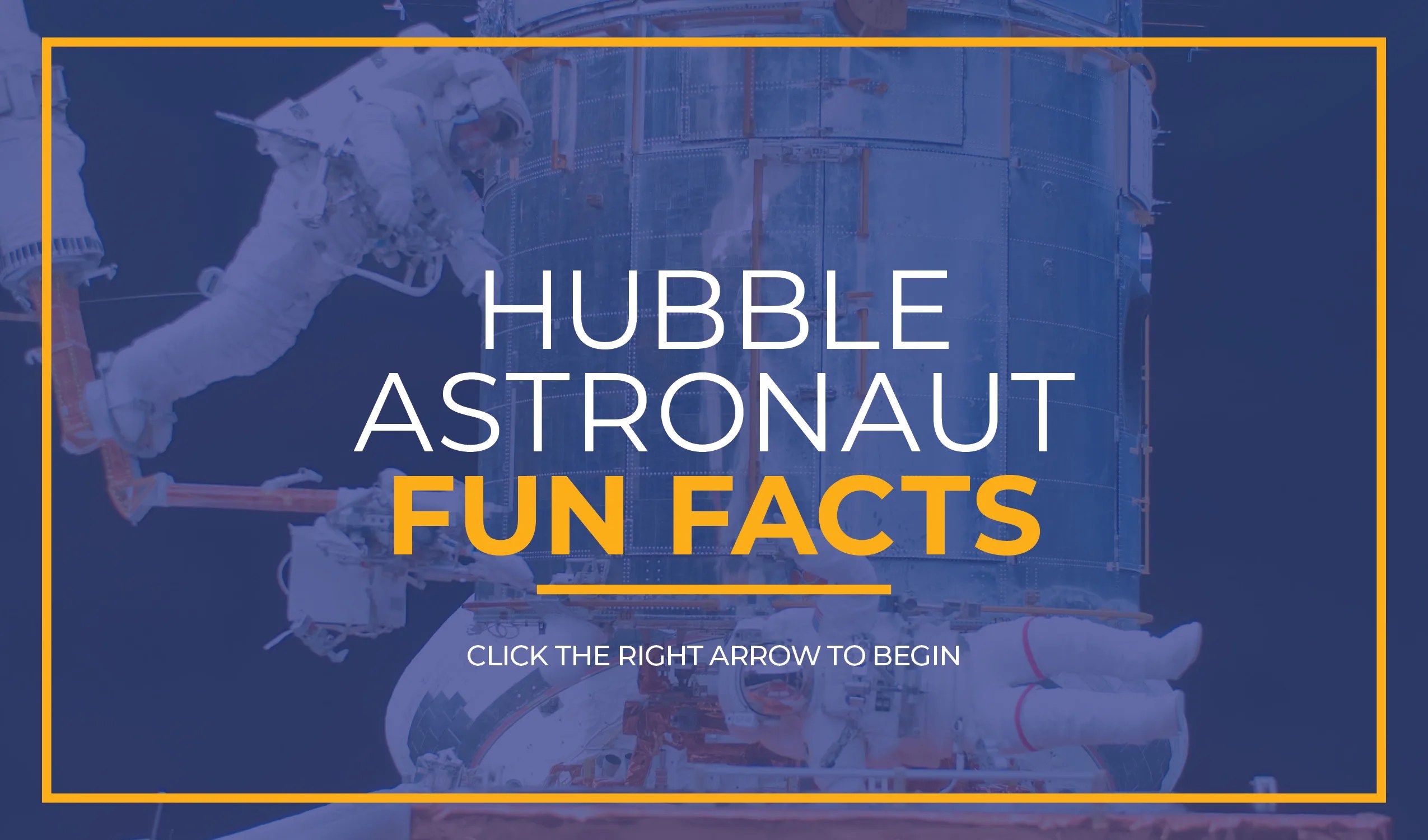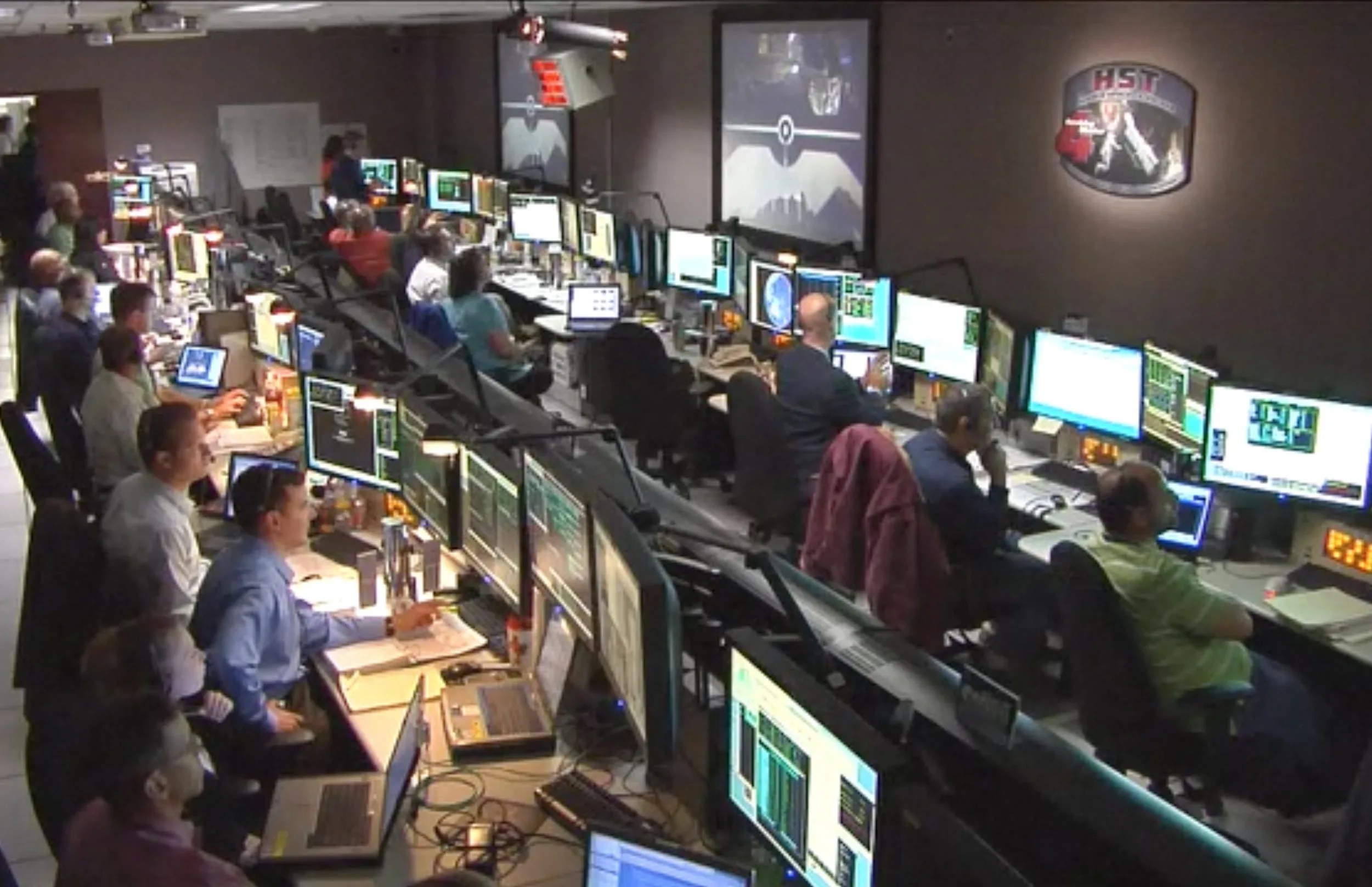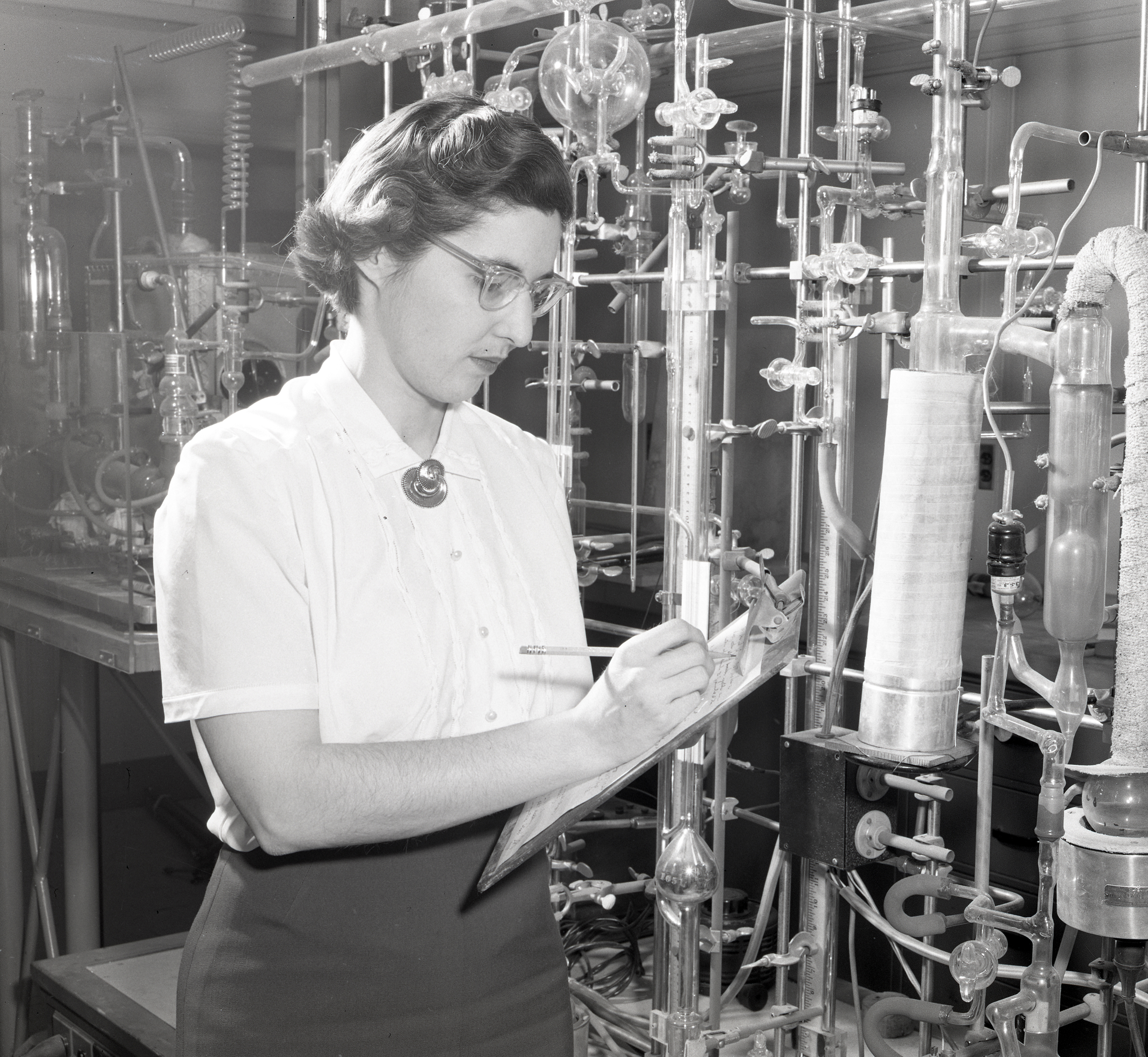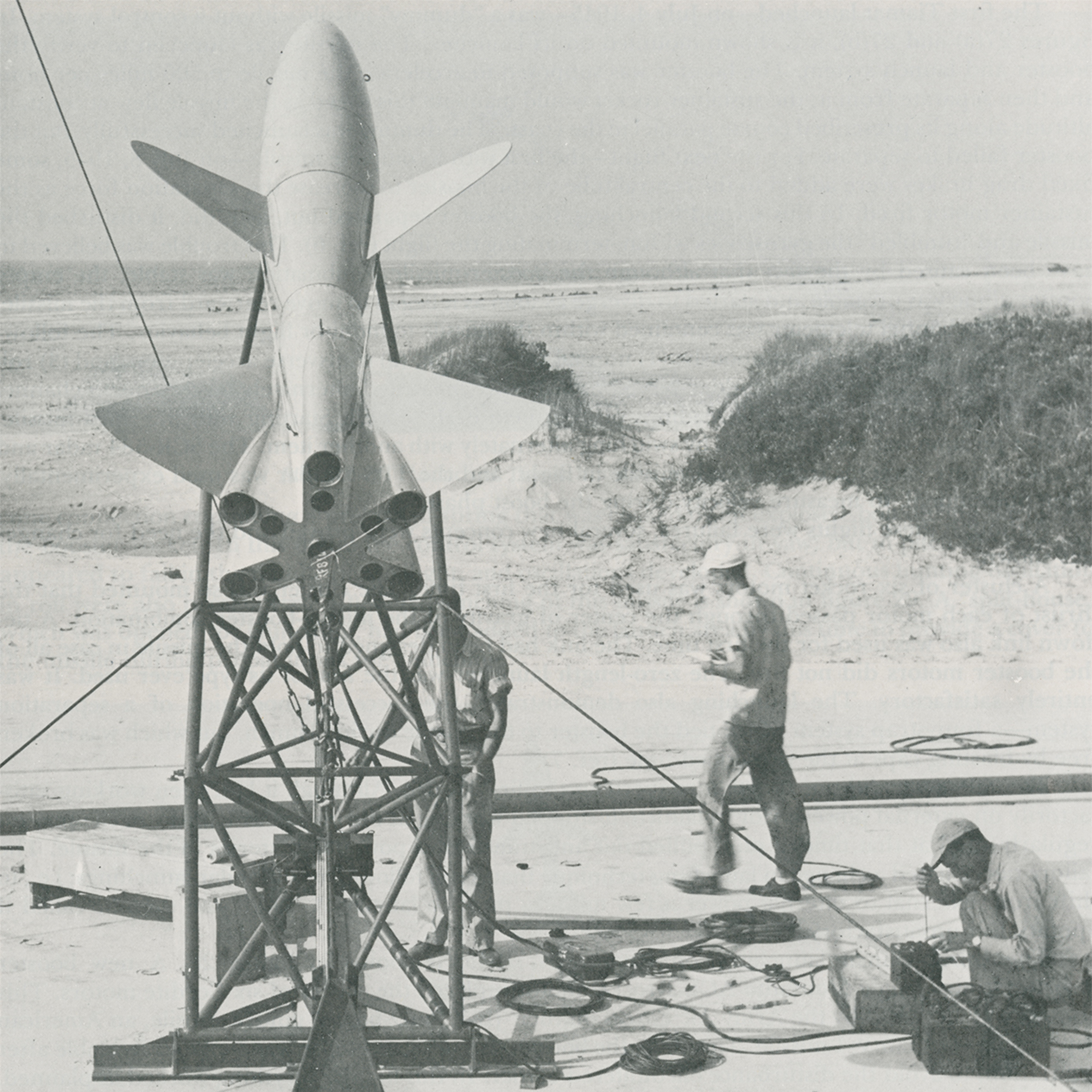1993
Servicing Mission 1
December 2-13, 1993
The first opportunity to conduct planned maintenance on the telescope. Astronauts installed new instruments, including equipment that counteracted the flaw in Hubble's primary mirror.
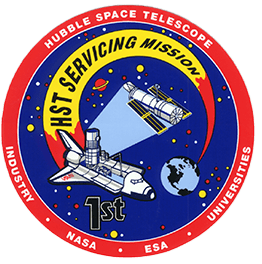
December 2, 1993 – Launch of Servicing Mission 1
At 4:27 a.m. ET, the Space Shuttle Endeavour launched from Kennedy Space Center in Florida with seven astronauts trained to rendezvous with and repair the Hubble Space Telescope for the first time ever.
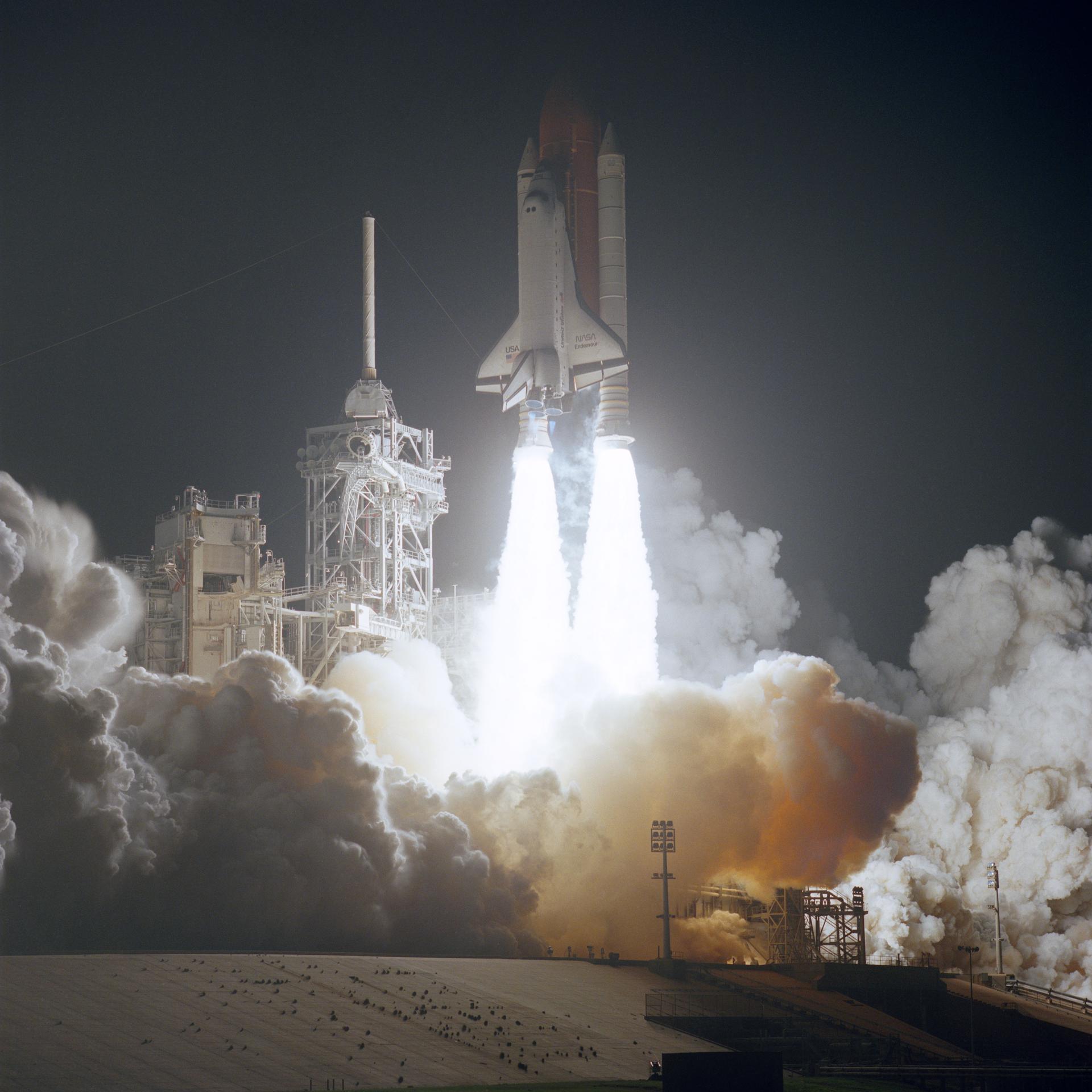
December 4, 1993 – Hubble Captured and Secured in the Cargo Bay
Mission specialist Claude Nicollier used Endeavour’s robotic arm to gently dock Hubble in the shuttle’s cargo bay so that his crewmates could work on the telescope.
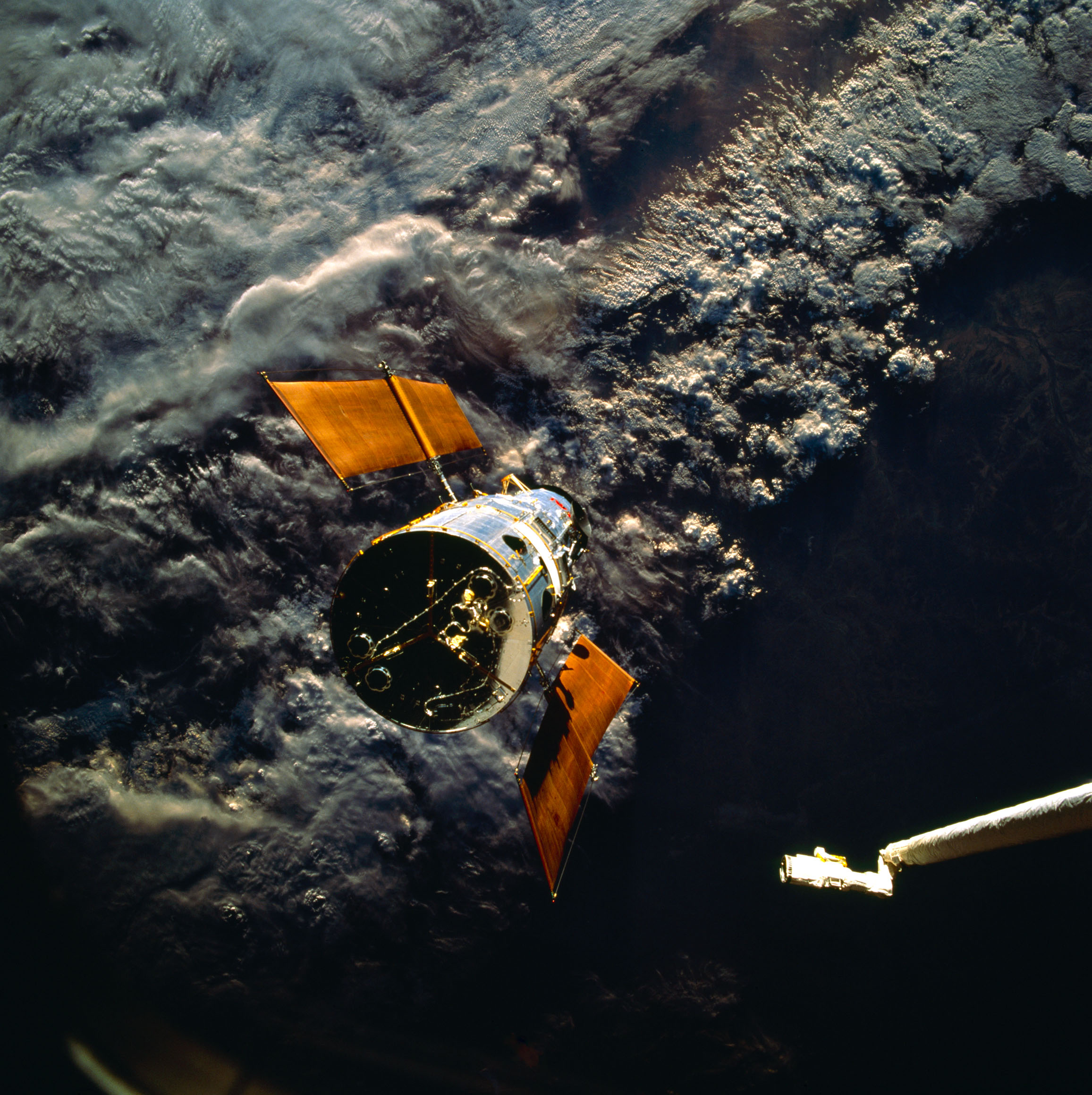
December 4, 1993 – First Spacewalk
Astronauts Story Musgrave and Jeff Hoffman entered the shuttle cargo bay to begin the first of five spacewalks. Their tasks included replacing some of Hubble’s gyroscopes and electrical control units for the gyros.
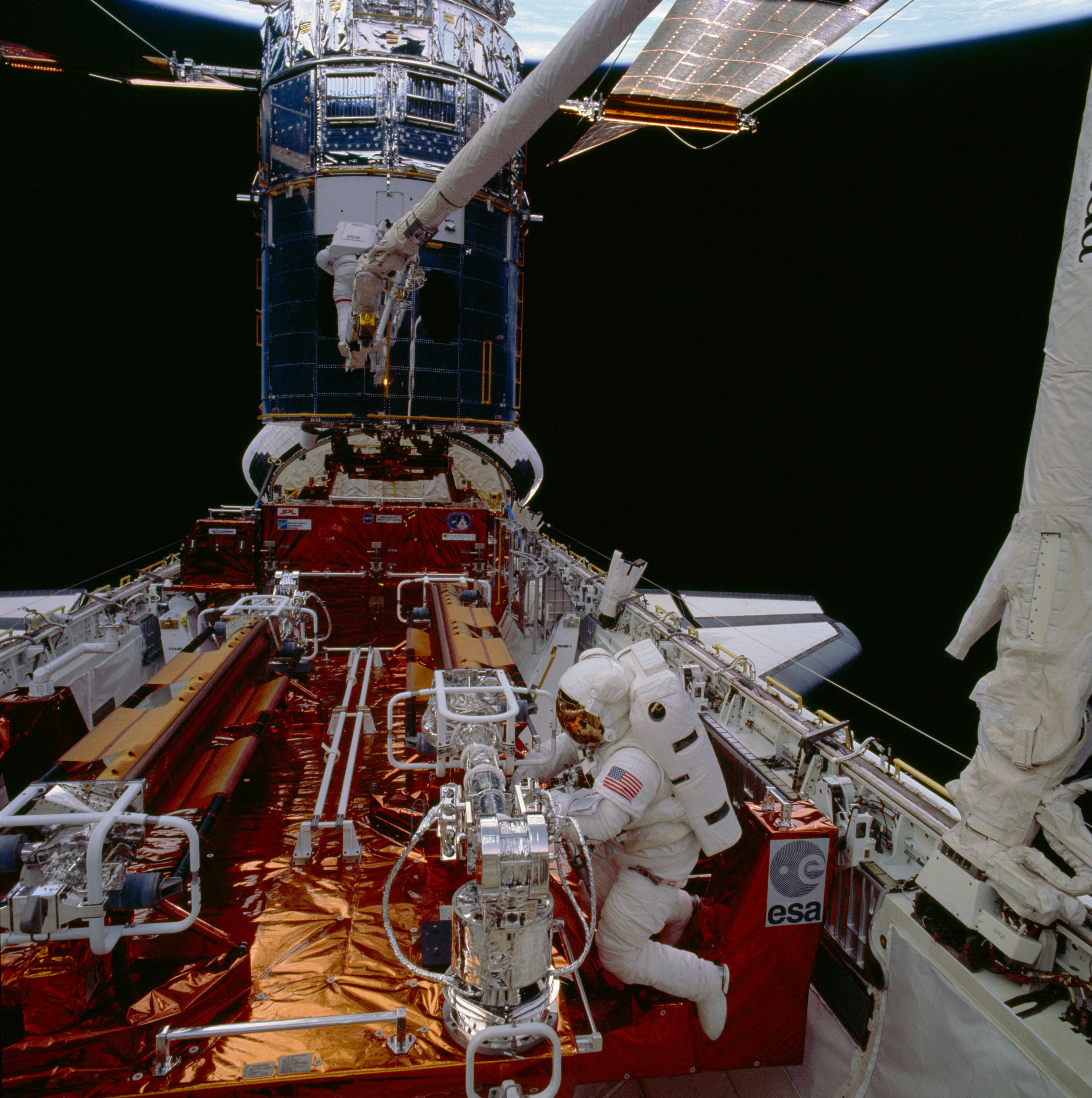
December 5, 1993 – Second Spacewalk
Astronauts Tom Akers and Kathy Thornton began the second spacewalk with the goal of replacing Hubble’s solar arrays with a new set that better handles temperature changes during the spacecraft's orbit.
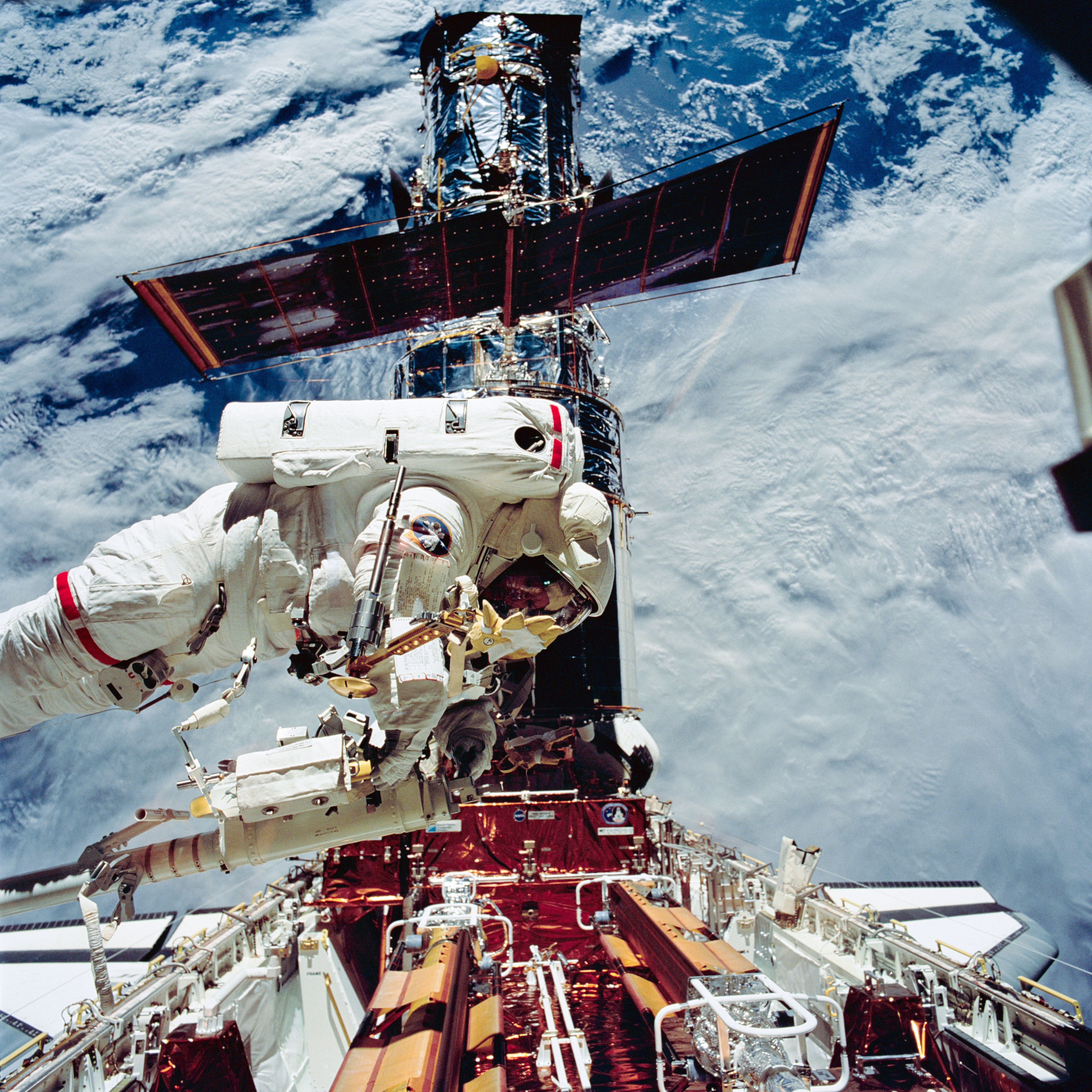
December 5, 1993 – Solar Panel Separation
Astronaut Kathy Thornton released one of Hubble’s original solar panels into space. The solar panel, which was damaged and couldn’t be returned safely to Earth, separated from the shuttle and eventually deorbited and burned up in the atmosphere.
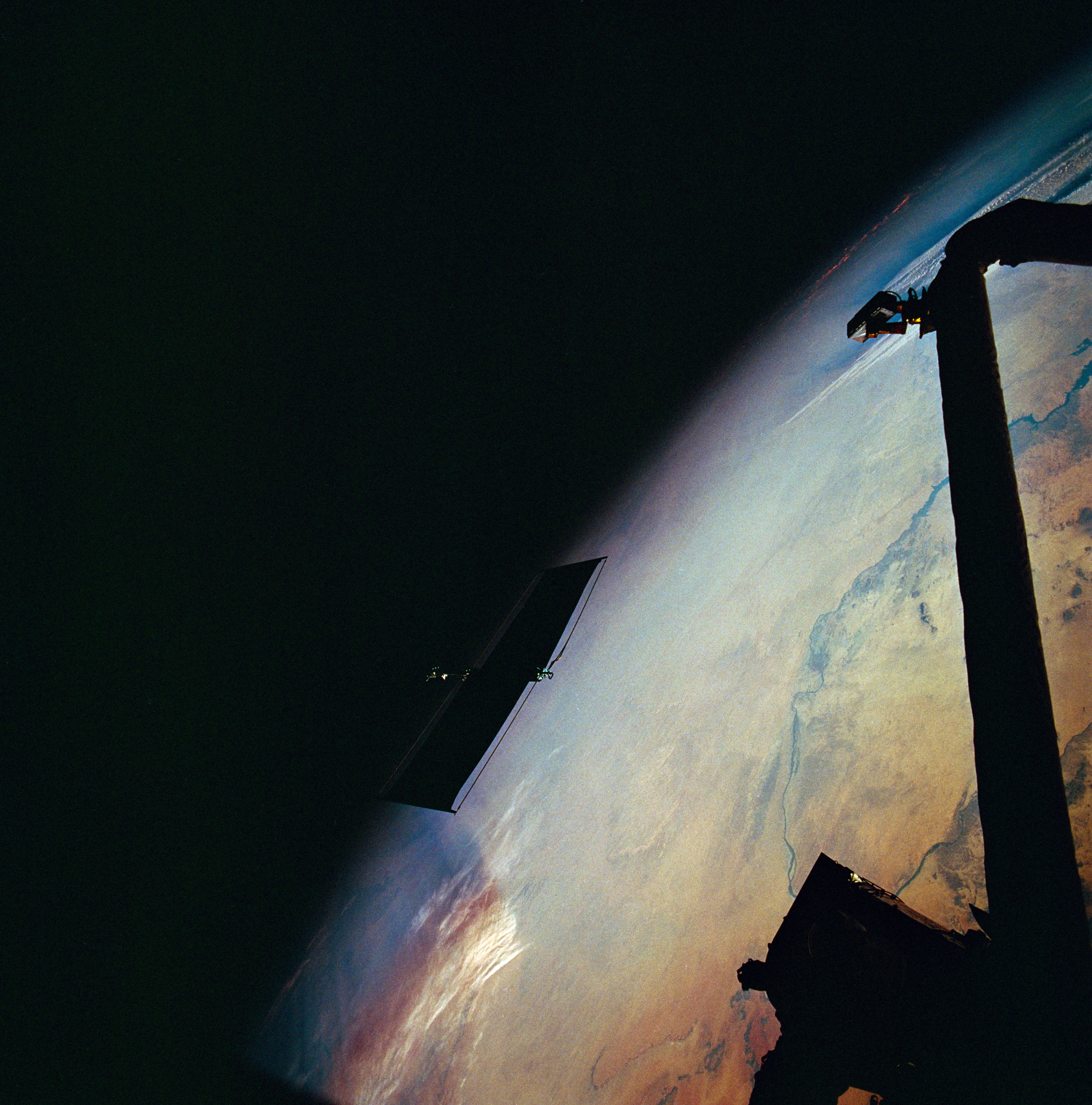
December 6, 1993 – Third Spacewalk
Astronauts Story Musgrave and Jeff Hoffman began the third spacewalk of the servicing mission. Their main task was to replace Hubble’s primary camera with a more advanced version that included corrective mirrors to clear up Hubble’s blurry vision.
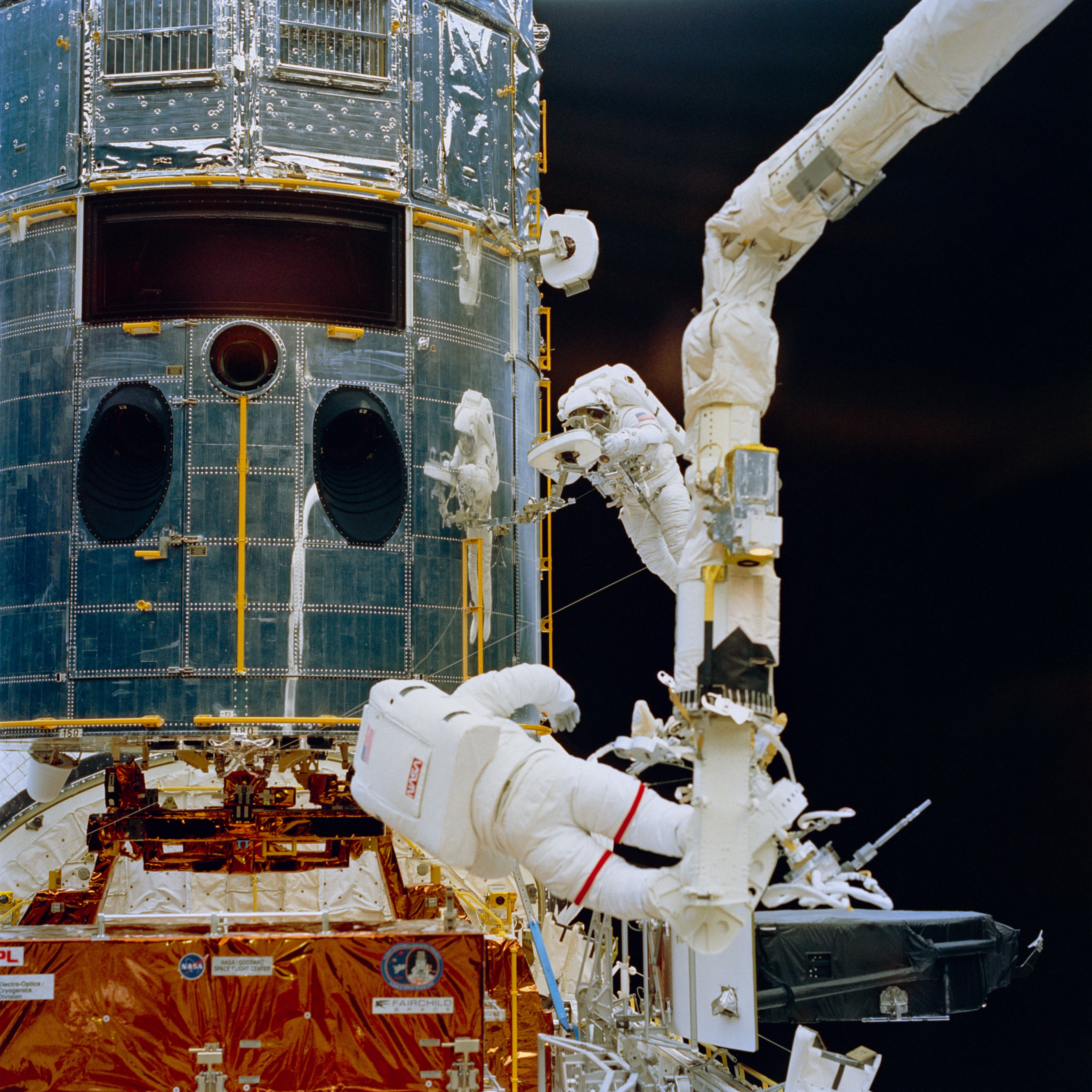
December 7, 1993 – Fourth Spacewalk
Astronauts Kathy Thornton and Tom Akers began the fourth spacewalk with the objective to install COSTAR, a device that would focus Hubble’s burred vision for three of the science instruments aboard the orbiting observatory.
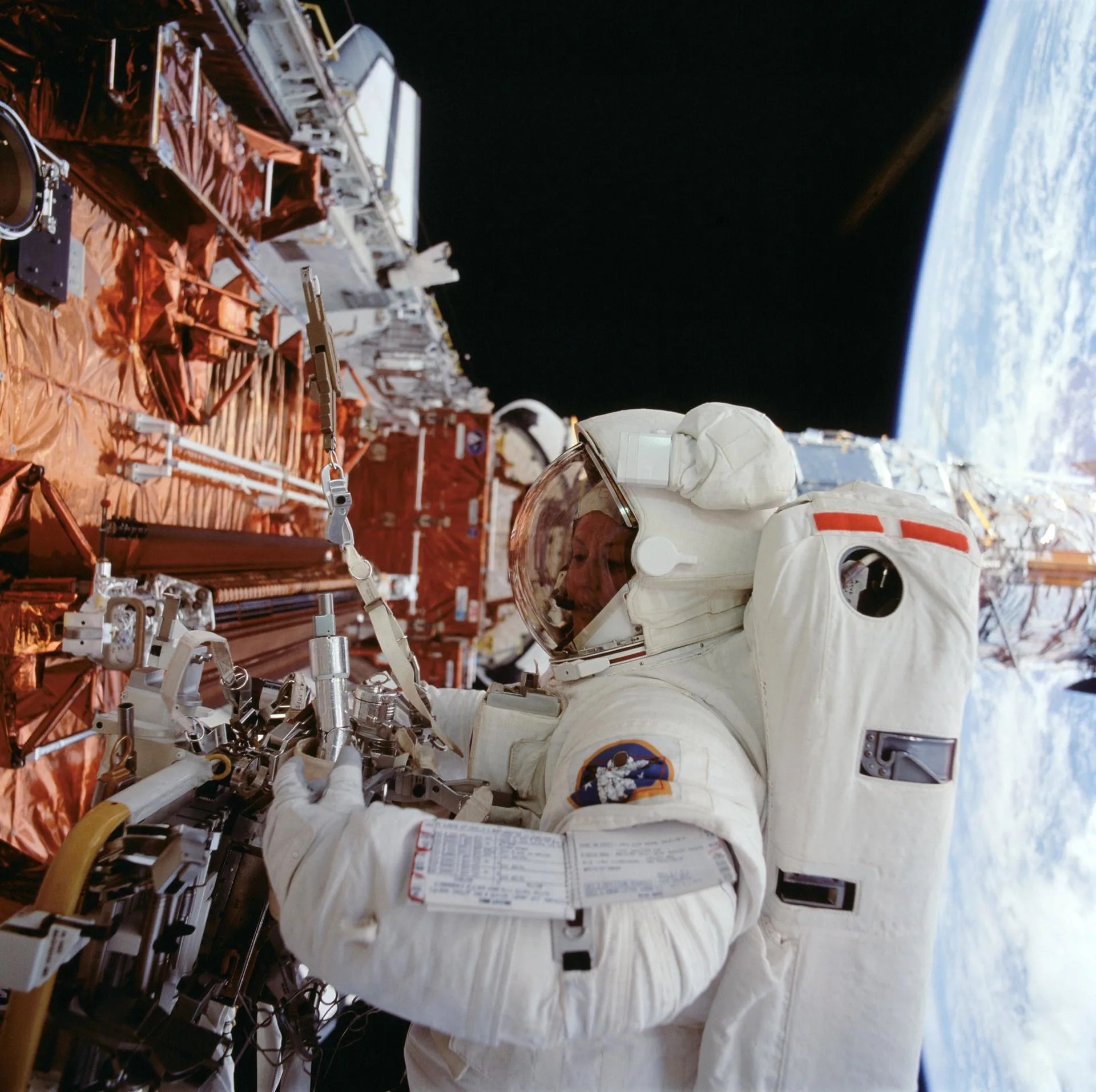
December 8, 1993 – Hubble Gets a Boost
Shuttle pilot Ken Bowersox made a set of orbital maneuvers to boost Endeavour and Hubble into a higher orbit around Earth, delaying the telescope’s eventual re-entry into the atmosphere.

December 8, 1993 – Final Spacewalk
Astronauts Jeff Hoffman and Story Musgrave began the final spacewalk of the mission. They replaced solar array drive electronics, assisted the solar array deployment, installed an electrical connection box, and completed work on Hubble’s magnetometers.
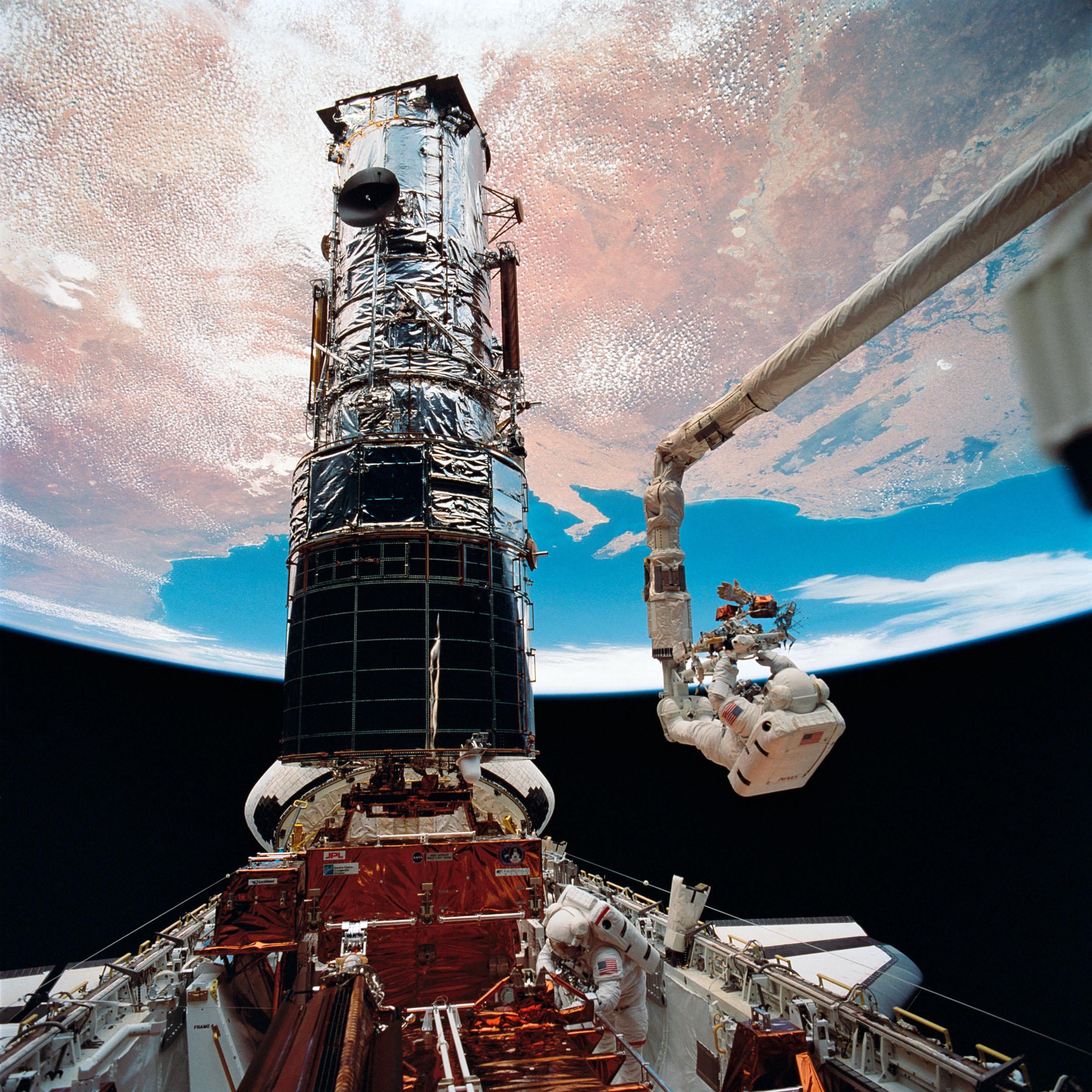
December 10, 1993 – Hubble Released Back Into Orbit
Astronaut Claude Nicollier used the Space Shuttle Endeavour’s robotic arm to release Hubble back into orbit so it could resume its explorations of the universe, now with much clearer vision.
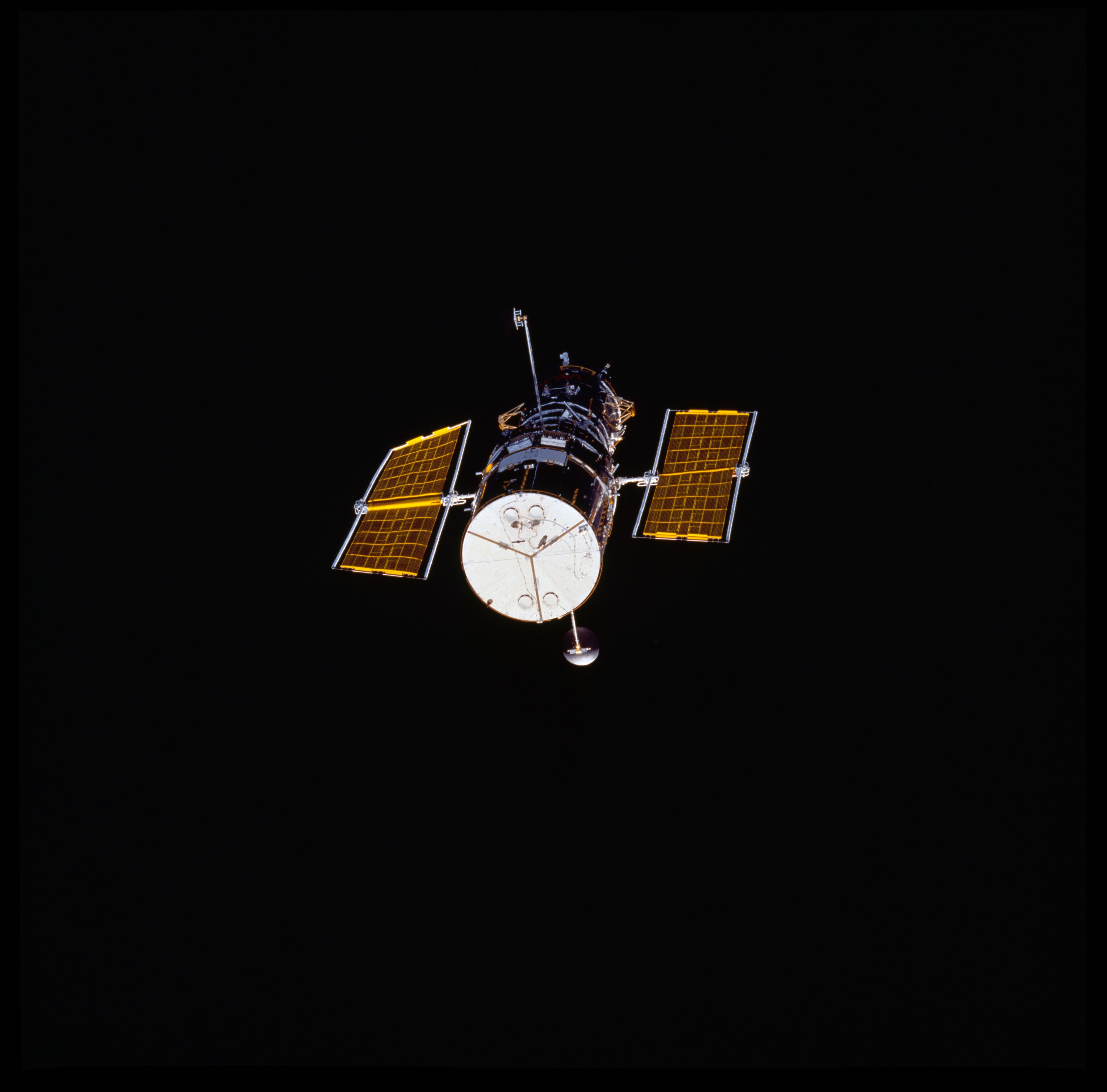
December 13, 1993 – Space Shuttle Endeavour Returns
The Space Shuttle Endeavour safely lands at Kennedy Space Center, bringing the successful first servicing mission to a close.
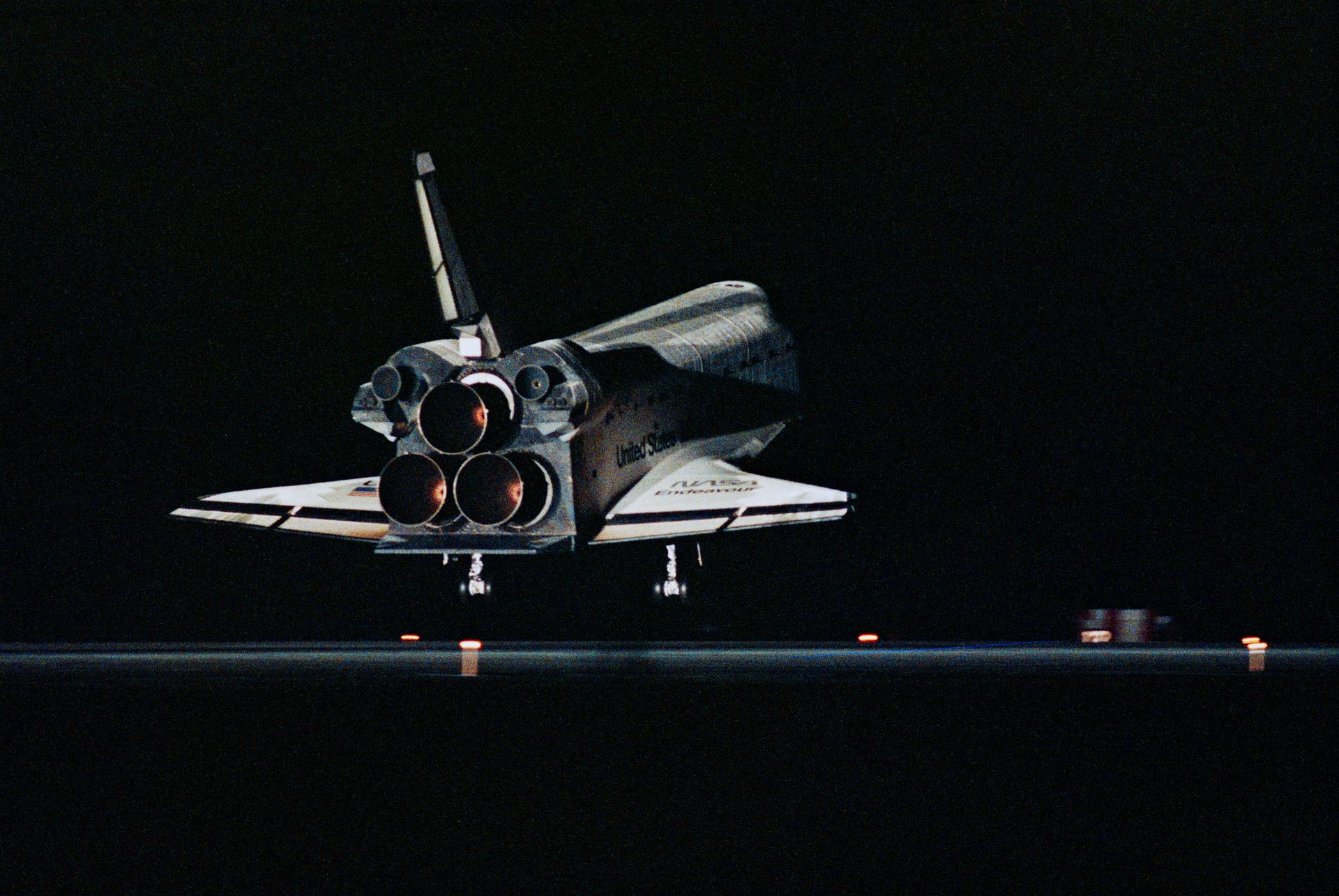
1997
Servicing Mission 2
February 11-21, 1997
The second servicing mission extended the range of wavelengths Hubble can see with the installation of two new instruments and increased the observatory's efficiency and performance.
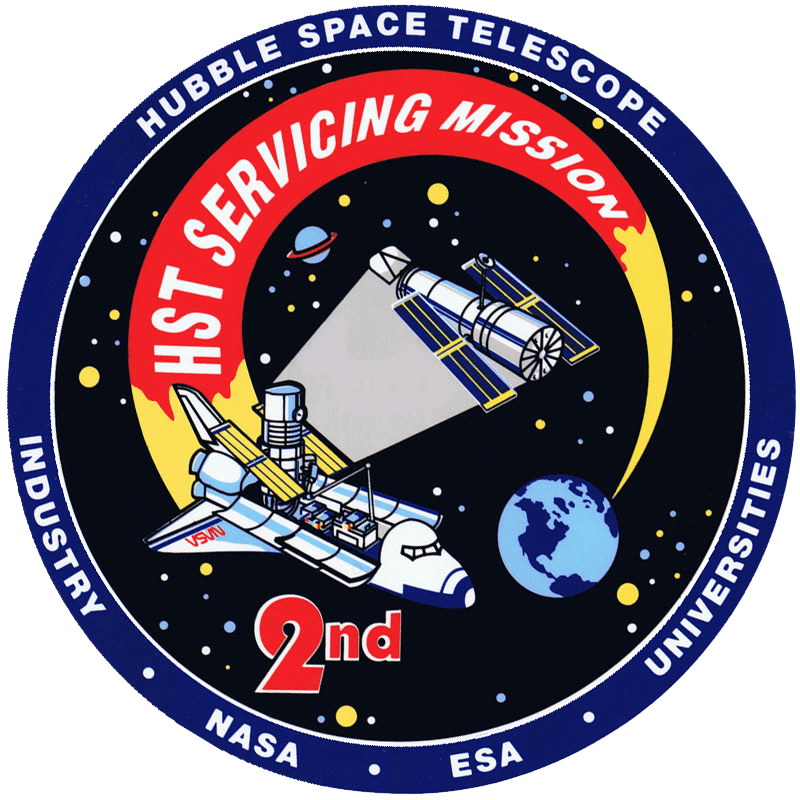
February 11, 1997 – Launch of Servicing Mission 2
At 3:35 a.m. ET, the Space Shuttle Discovery launched from Kennedy Space Center in Florida on the second Hubble servicing mission.
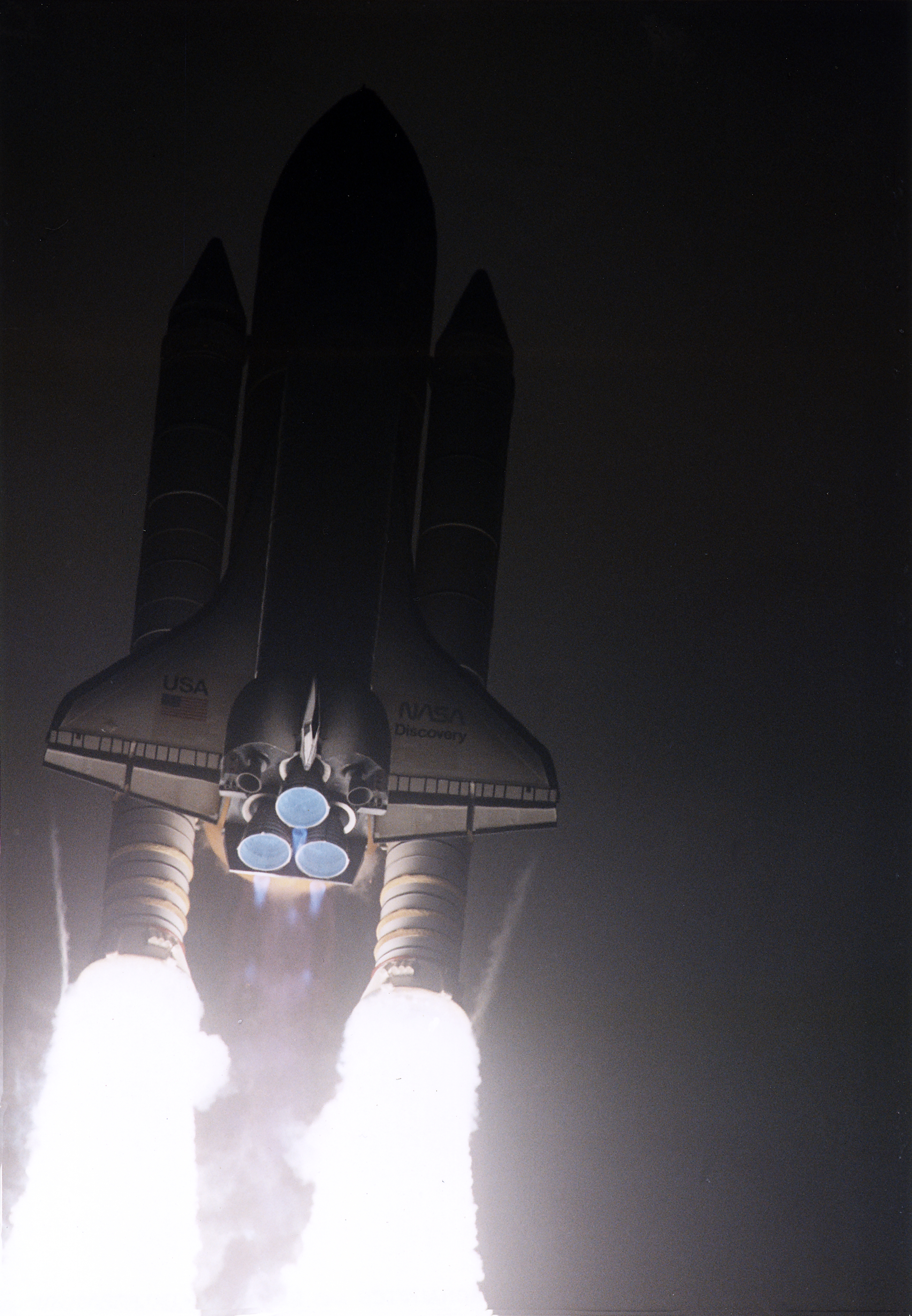
February 13, 1997 – Hubble Captured and Secured in the Cargo Bay
The crew used Discovery's robotic arm to gently dock Hubble in the shuttle’s cargo bay.
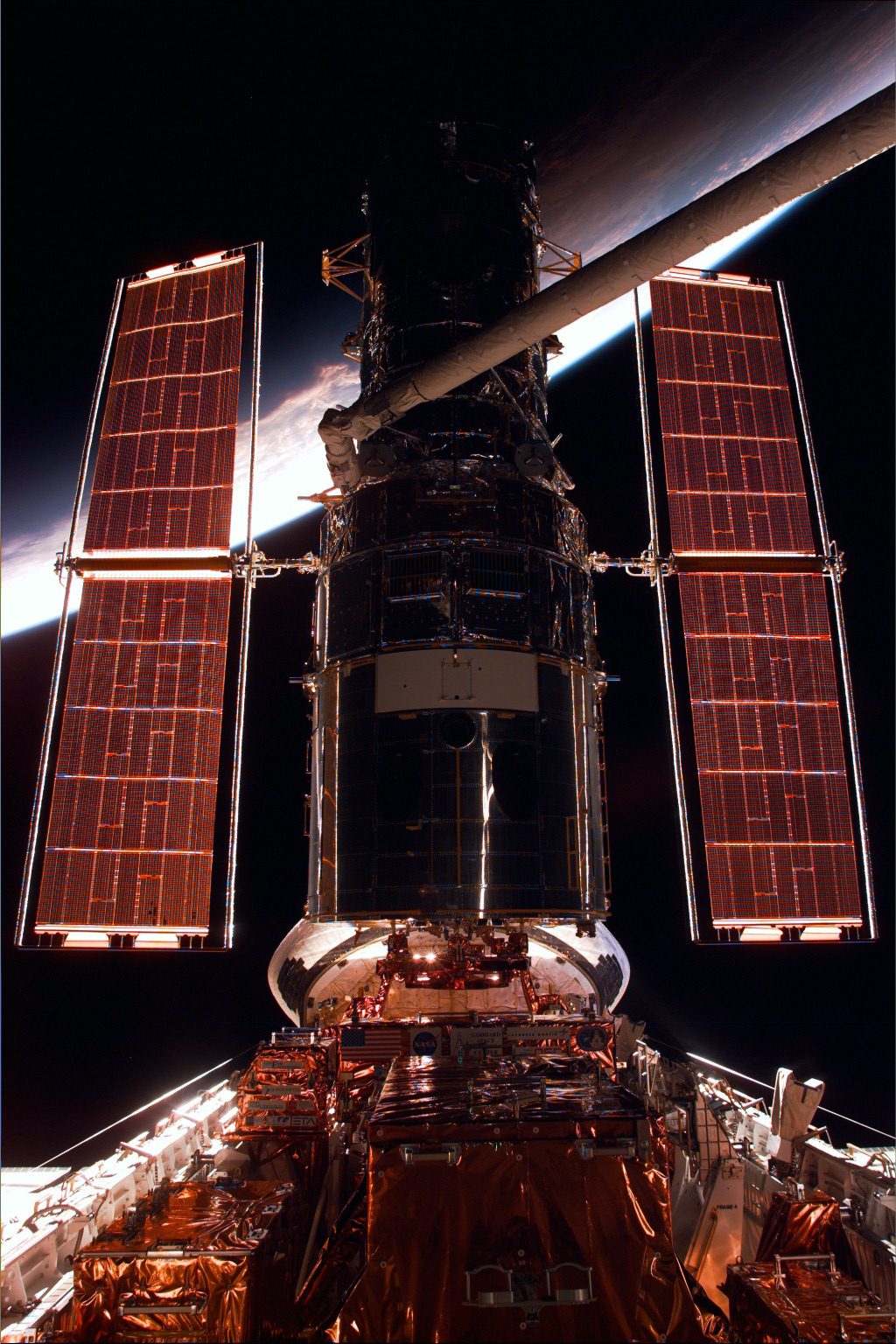
February 14, 1997 – First Spacewalk
Astronauts Mark Lee and Steven Smith embarked on the first spacewalk to service Hubble. They removed two scientific instruments (the Goddard High Resolution Spectograph and Faint Object Spectograph) and replaced them with the Space Telescope Imaging Spectrograph and Near Infrared Camera and Multi-Object Spectrometer.
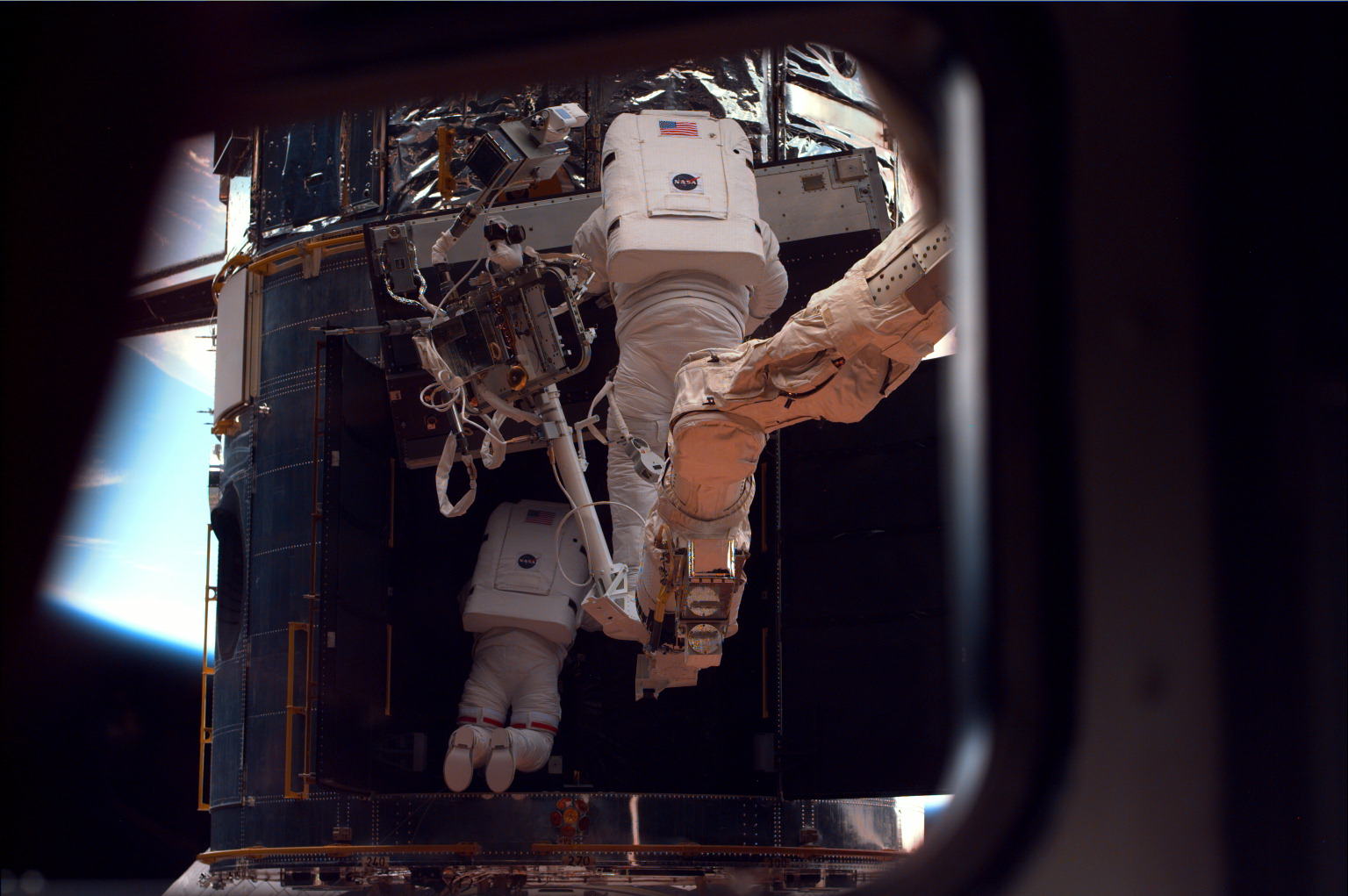
February 15, 1997 – Second Spacewalk
Astronauts Gregory Harbaugh and Joseph Tanner began the second spacewalk of the mission. They replaced a degraded Fine Guidance Sensor and a failed Engineering and Science Tape Recorder with new spares, and also installed a new unit called the Optical Control Electronics Enhancement Kit, which further increased the capability of the Fine Guidance Sensor to provide pointing information for the spacecraft and as a scientific instrument for astrometric science.
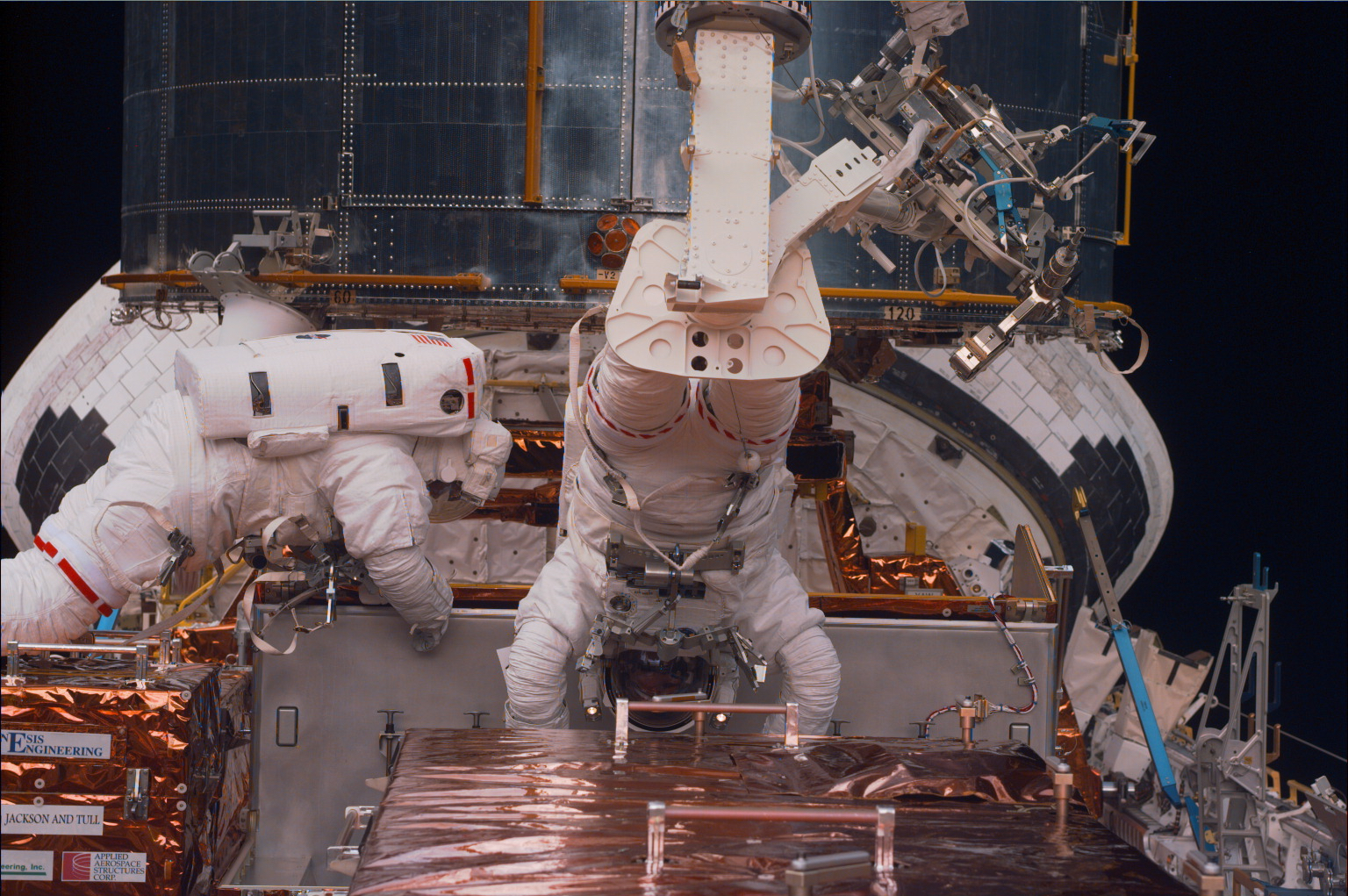
February 16, 1997 – Third Spacewalk
Astronauts Mark Lee and Steven Smith started the third spacewalk. They removed and replaced a Data Interface Unit on Hubble, as well as replaced an old reel-to-reel style Engineering and Science Tape Recorder with a new digital Solid State Recorder that allowed simultaneous recording and playback of data. In addition, they changed out one of four Reaction Wheel Assembly units that use spin momentum to move the telescope toward a target and maintain it in a stable position.
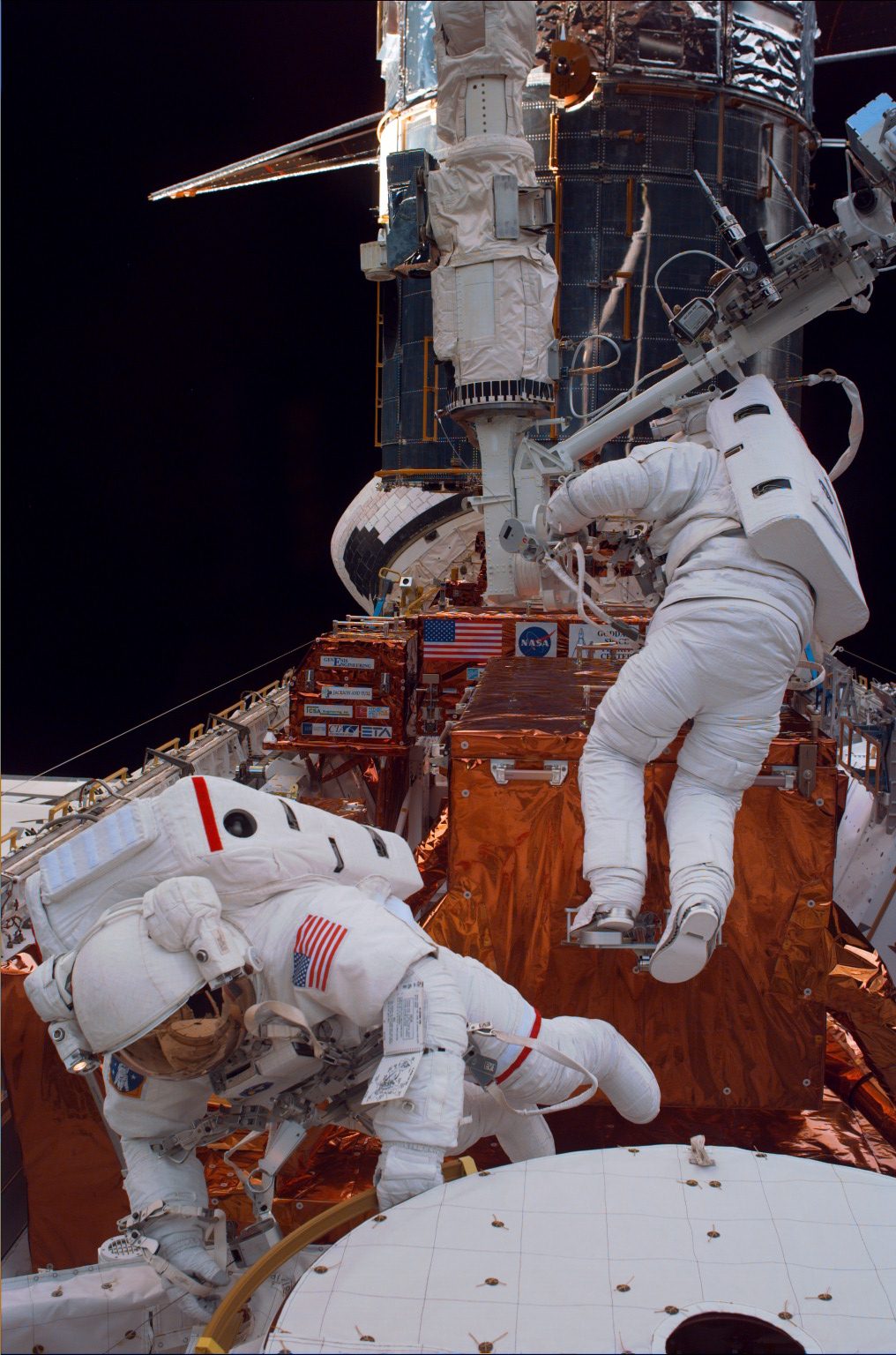
February 17, 1997 – Fourth Spacewalk
Astronauts Gregory Harbaugh and Joseph Tanner embarked on the fourth spacewalk of the mission. They replaced a Solar Array Drive Electronics package, which controls the positioning of Hubble's solar arrays, and also replaced covers over Hubble's magnetometers. In addition, new thermal blankets were installed over two areas of degraded insulation around the light shield portion of the telescope.
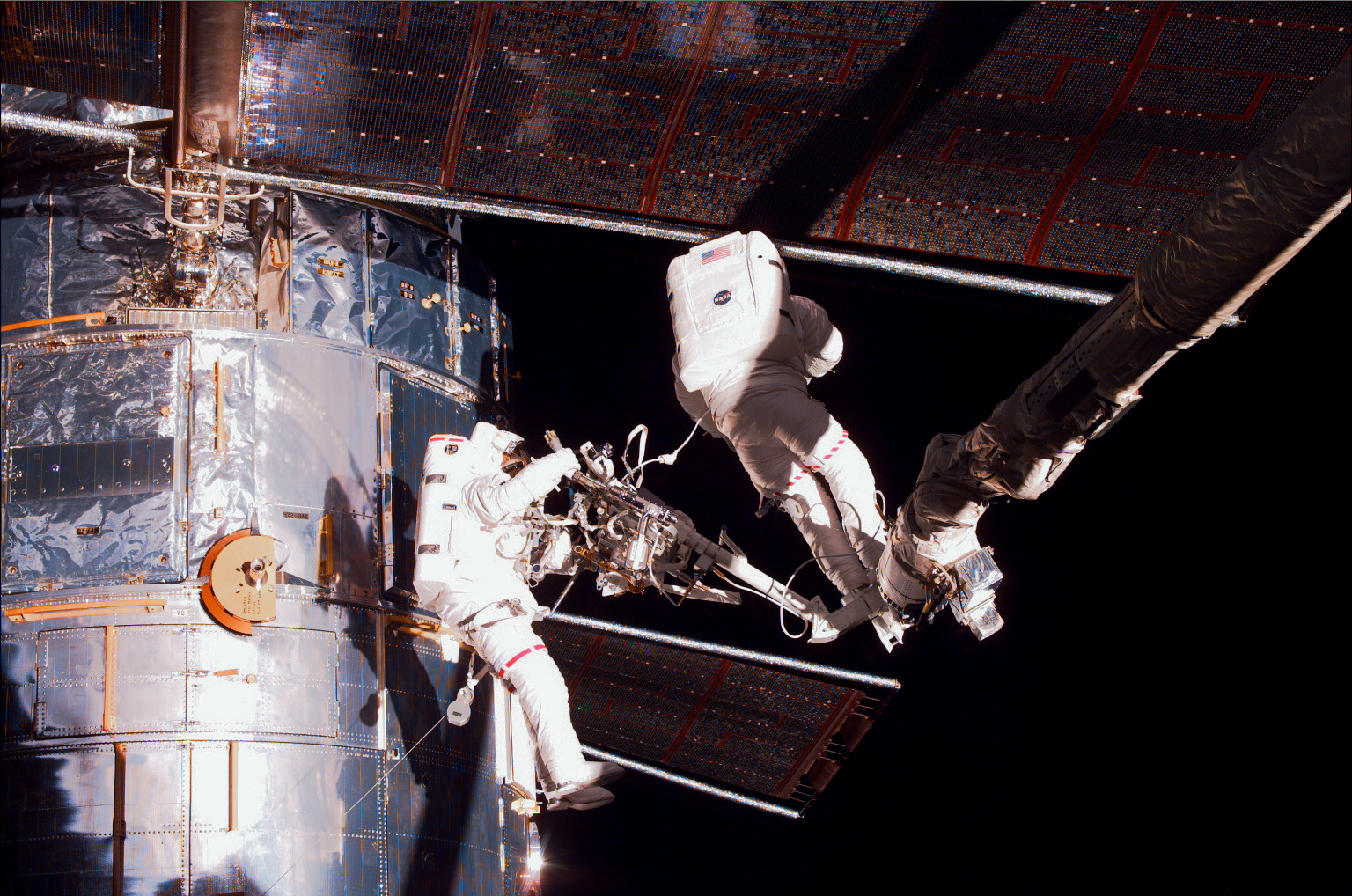
February 18, 1997 – Final Spacewalk
Astronauts Mark Lee and Steven Smith completed the fifth and final spacewalk of the second servicing mission. They attached several thermal insulation blankets to the telescope on areas which contain key data processing, electronics, and scientific instrument telemetry packages.
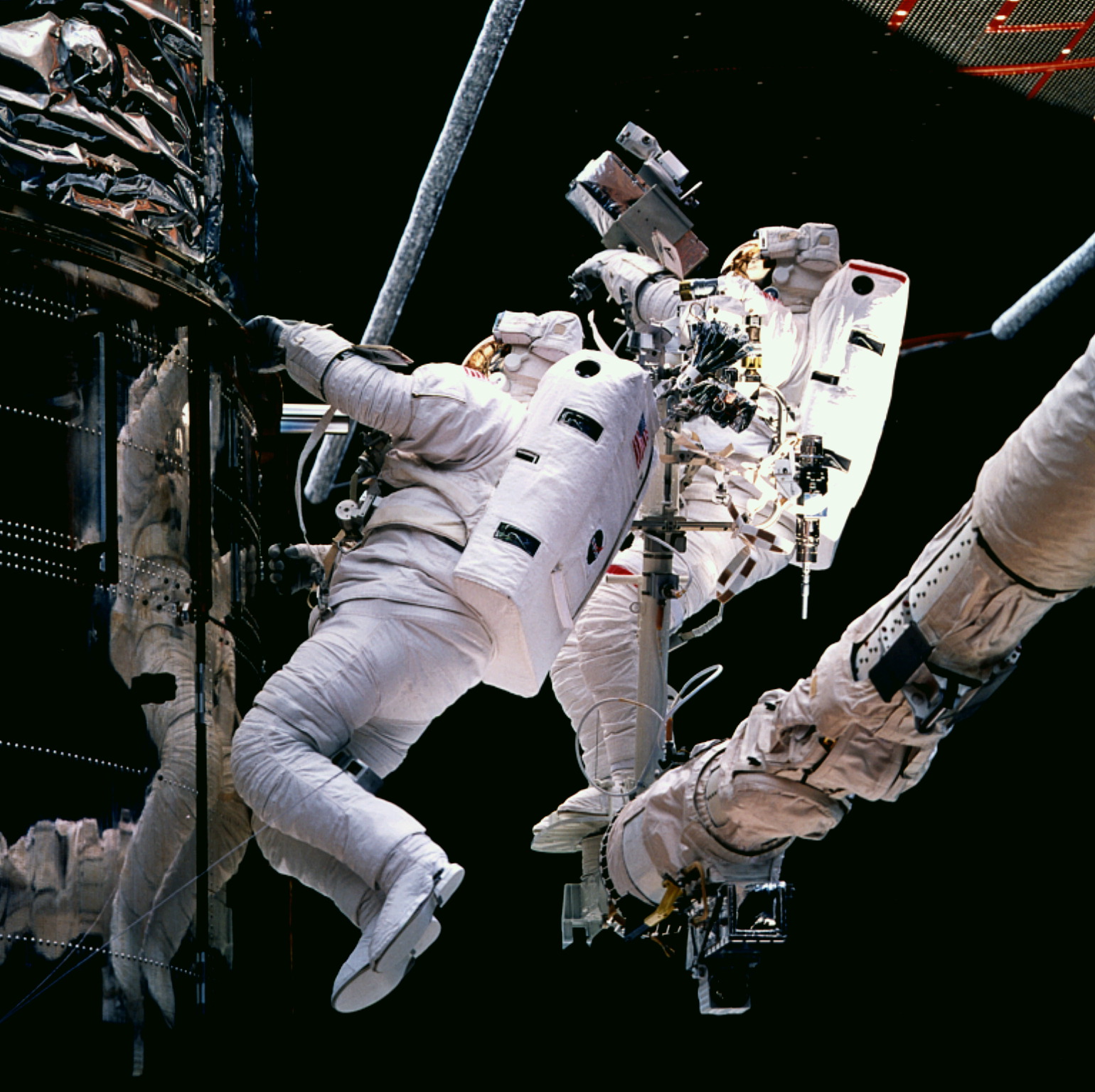
February 21, 1997 – Servicing Mission 2 Comes to a Close
The Hubble Space Telescope's second servicing mission comes to an end. Hubble returned to its orbit as an improved observatory, and the Space Shuttle Discovery safely landed back at Kennedy Space Center.
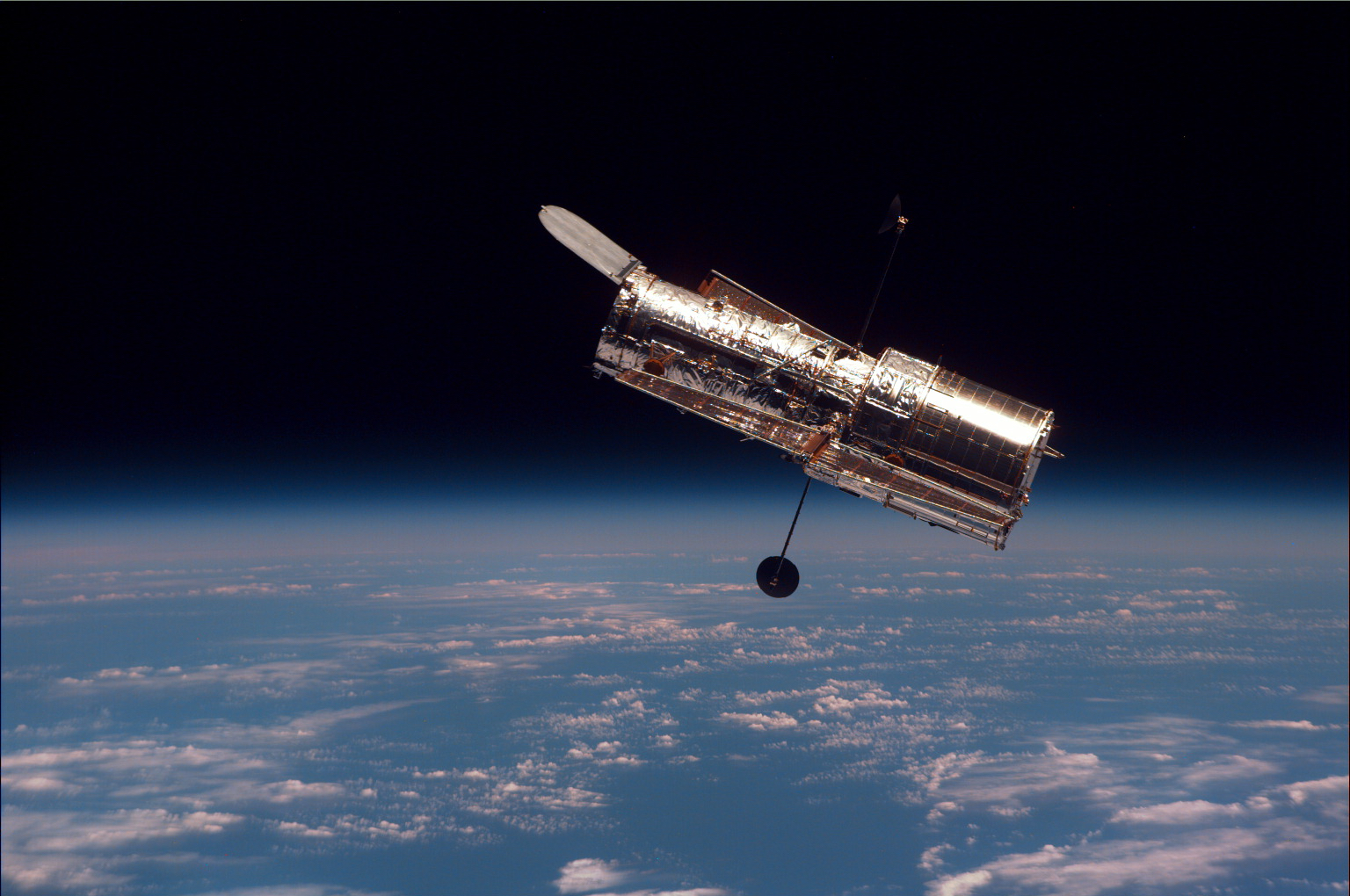
1999
Servicing Mission 3A
December 19-27, 1999
What was originally conceived as a mission of preventive maintenance turned more urgent on Nov. 13, 1999, when the fourth of Hubble's six gyros failed. Hubble required at least three of its stabilizing gyros to conduct science at that time. Hubble entered a state of dormancy called safe mode while the telescope awaited repairs. To bring Hubble back into operation more quickly, NASA split the third servicing mission into two parts.
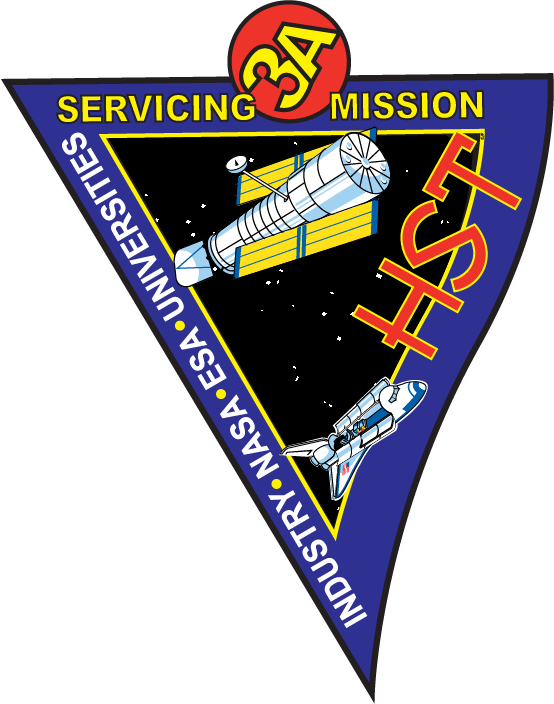
December 19, 1999 – Launch of Servicing Mission 3A
At 7:50 p.m. ET, the Space Shuttle Discovery launched from Kennedy Space Center in Florida with seven astronauts aboard.
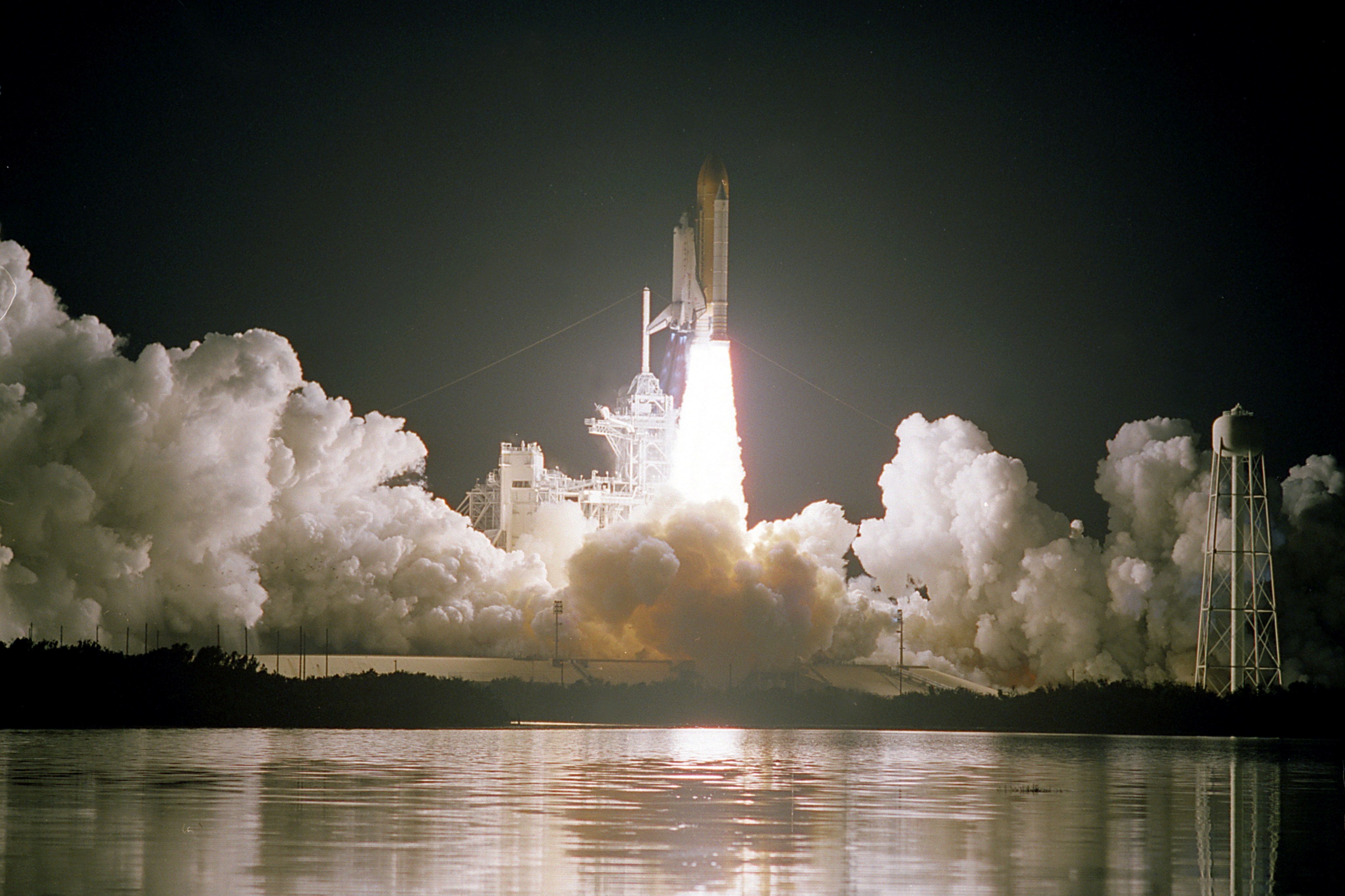
December 21, 1999 – Hubble Captured and Secured in the Cargo Bay
The crew used Discovery's robotic arm to gently dock Hubble in the shuttle’s cargo bay.
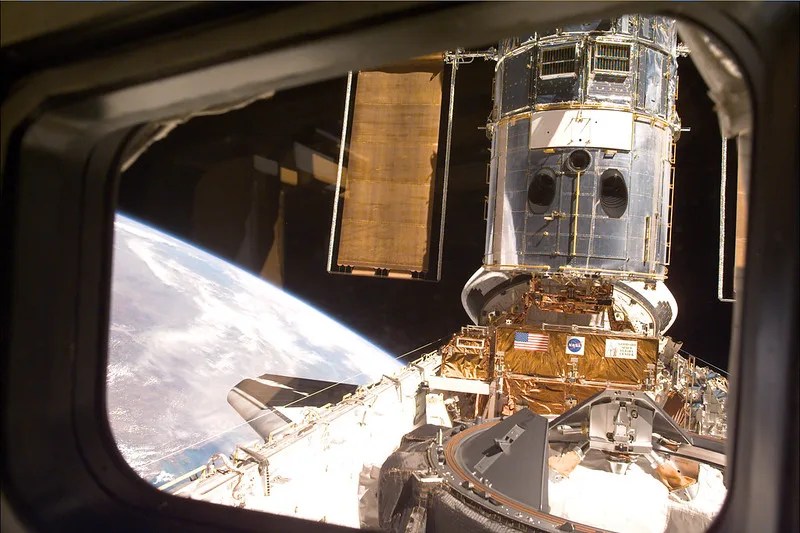
December 22, 1999 – First Spacewalk
Astronauts Steven Smith and John Grunsfeld conducted the mission's first spacewalk. They made several repairs, including the replacement of Hubble's three Rate Sensor Units – each containing two gyroscopes, which are used to point the telescope.
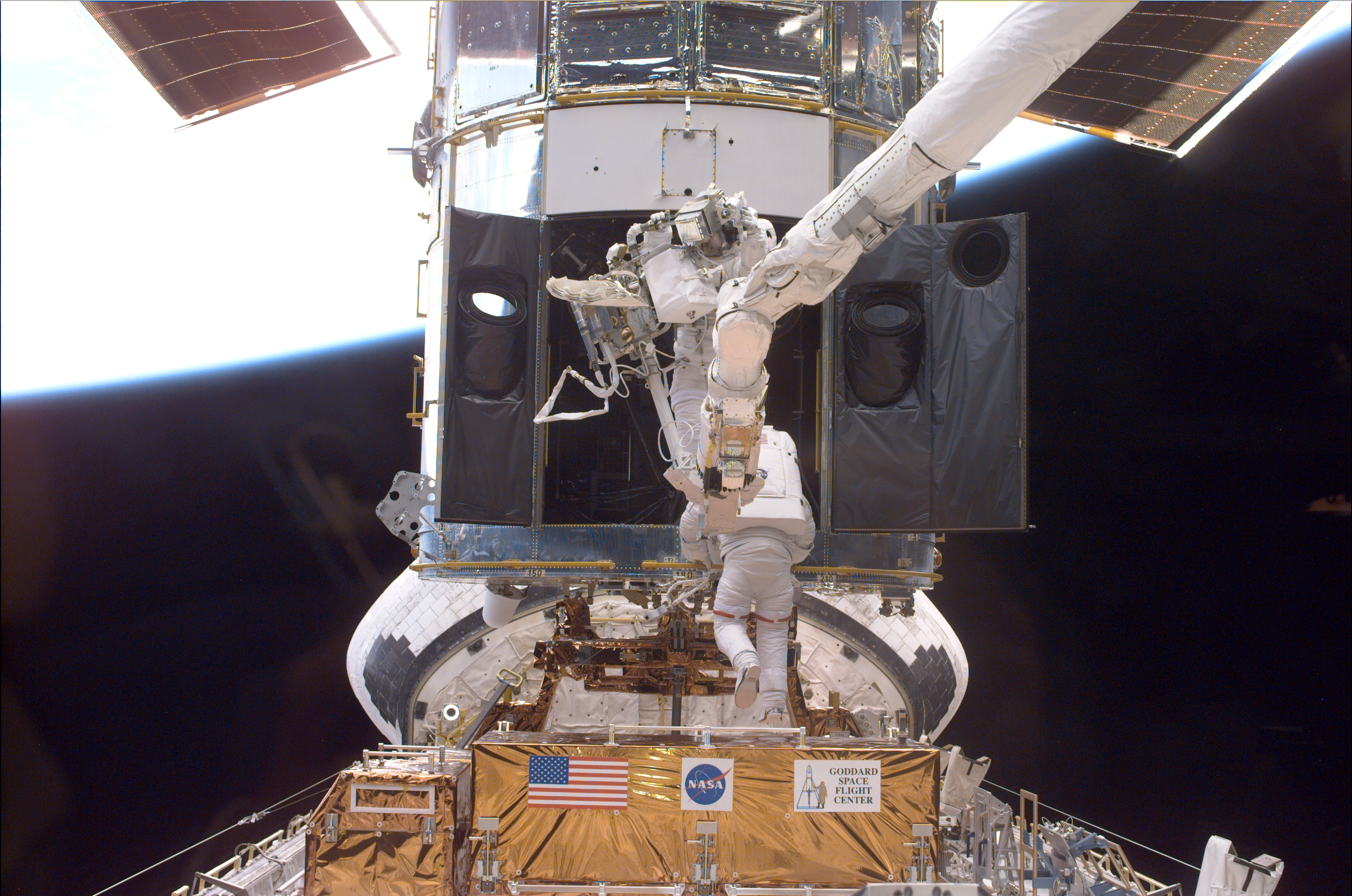
December 23, 1999 – Second Spacewalk
Astronauts Michael Foale and Claude Nicollier embarked on the second spacewalk. They installed a new advanced computer, 20 times faster than Hubble's old one, plus a new, 550-pound fine guidance sensor.
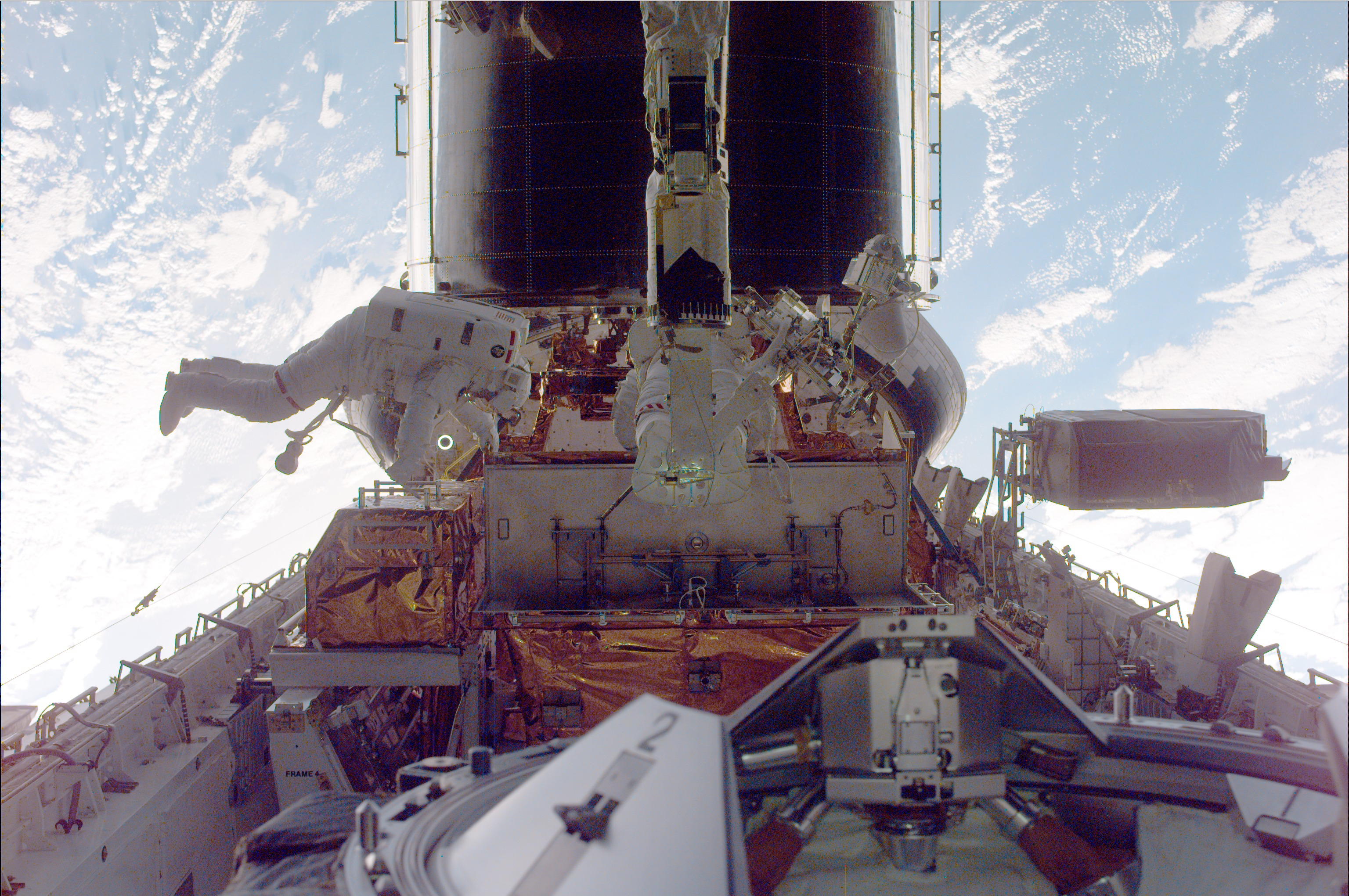
December 24-25, 1999 – Final Spacewalk
Astronauts Steven Smith and John Grunsfeld teamed up for the mission's third and final spacewalk. They installed a transmitter that sends scientific data from Hubble to the ground, replacing one that failed in 1998. Plus, they replaced an older mechanical reel-to-reel recorder with a solid state digital recorder.
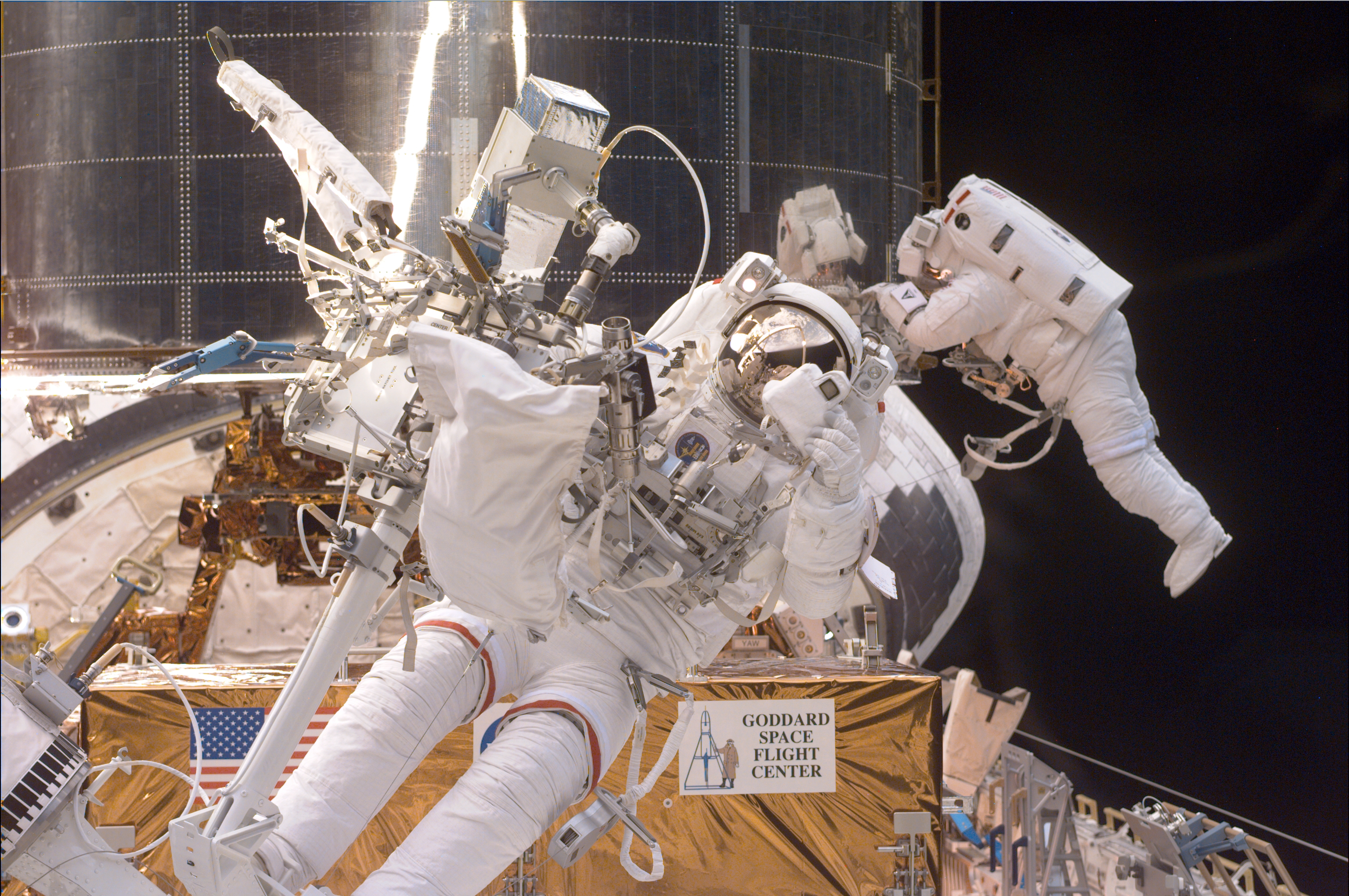
December 27, 1999 – Servicing Mission 3A Comes to a Close
The Hubble Space Telescope's third servicing mission comes to an end. Hubble returned to its orbit after being "rescued," and the Space Shuttle Discovery safely landed back at Kennedy Space Center.
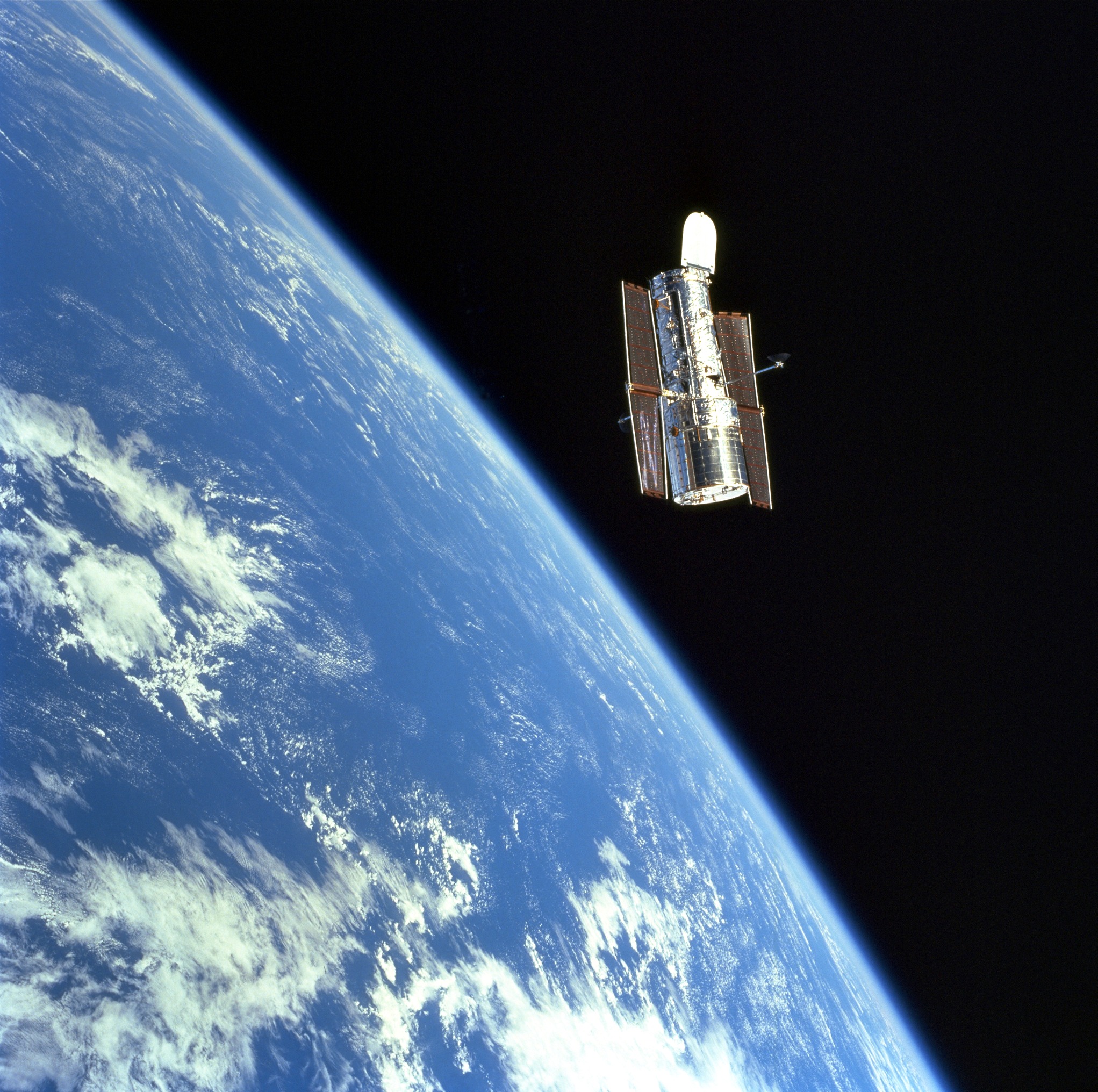
2002
Servicing Mission 3B
March 1-12, 2002
During SM3B, astronauts replaced Hubble's solar panels and installed the Advanced Camera for Surveys, which took the place of Hubble's Faint Object Camera, the telescope's last original instrument.
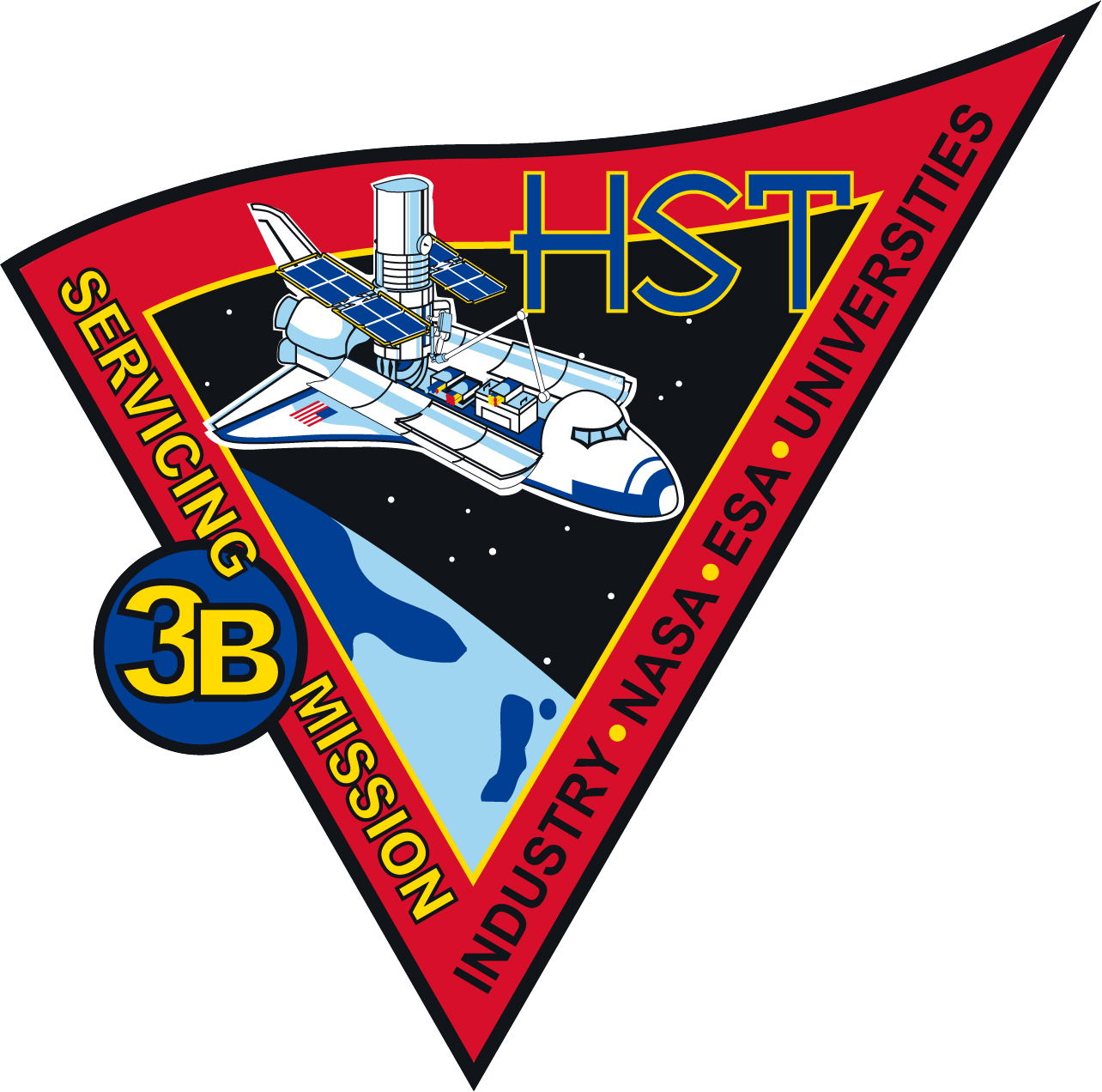
March 1, 2002 – Launch of Servicing Mission 3B
At 5:22 a.m. ET, the Space Shuttle Columbia launched from Kennedy Space Center in Florida with seven astronauts aboard.
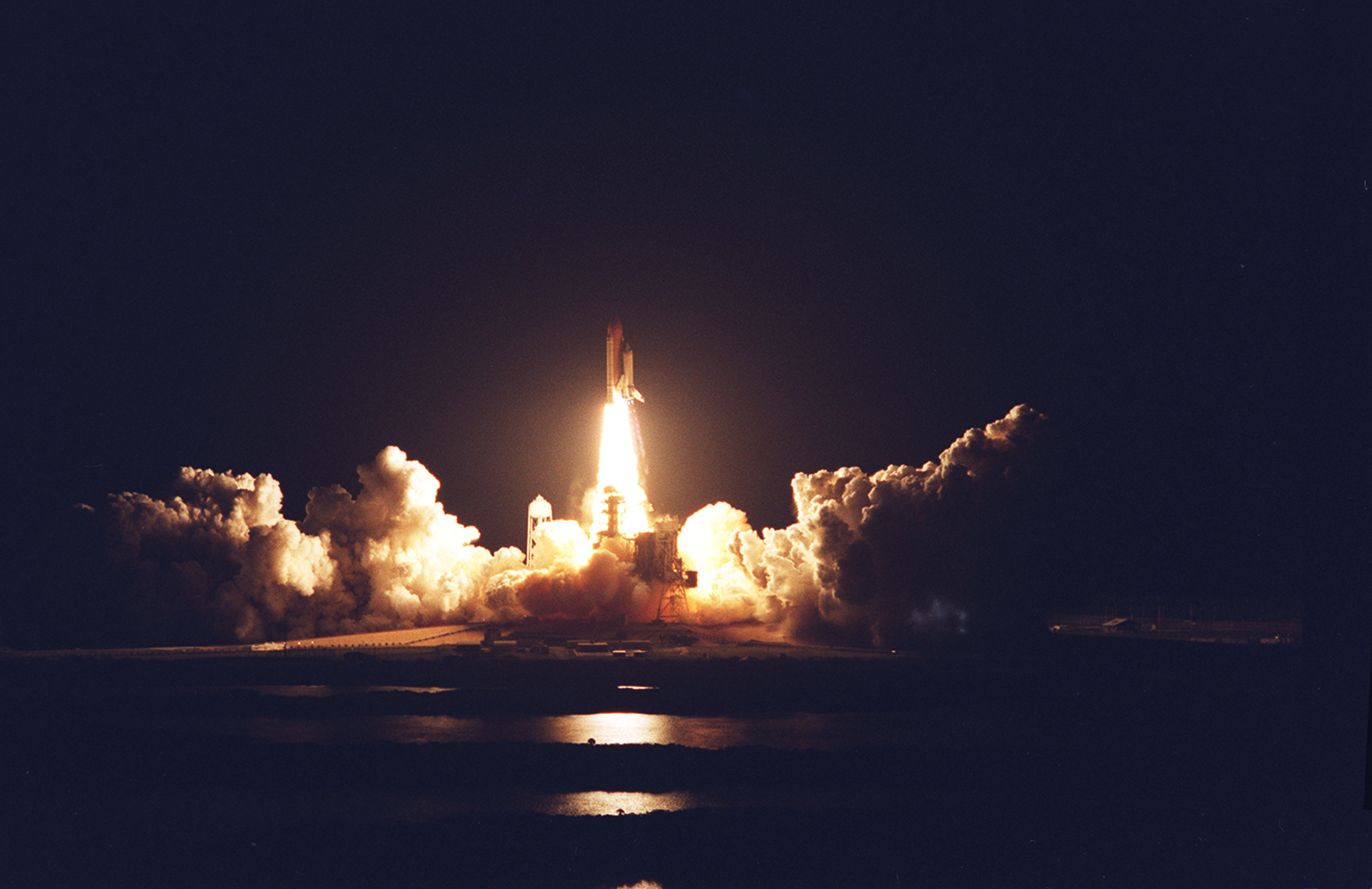
March 3, 2002 – Hubble Captured and Secured in the Cargo Bay
The crew used Columbia's robotic arm to gently dock Hubble in the shuttle’s cargo bay so that his crewmates could work on the telescope.
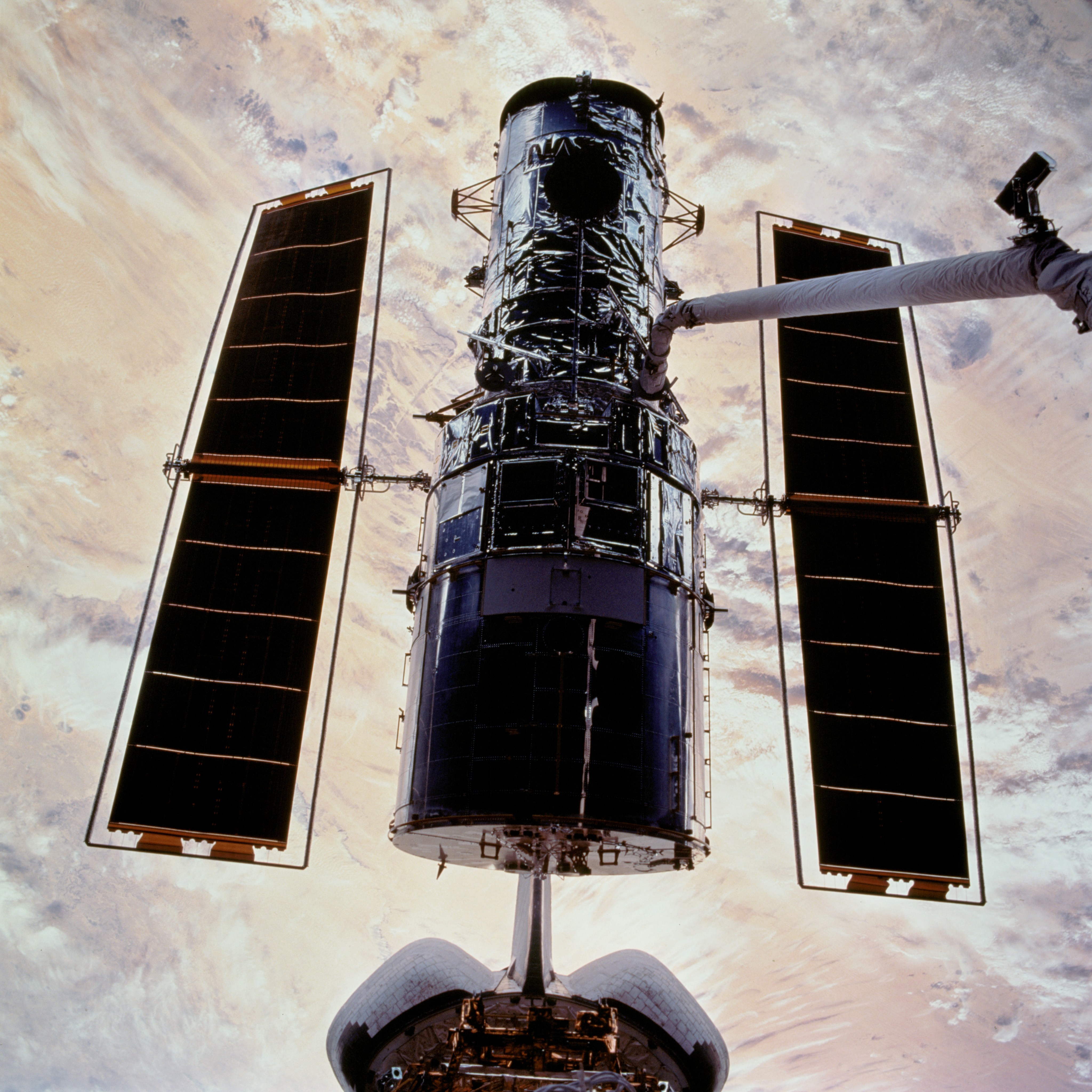
March 4, 2002 – First Spacewalk
Astronauts Rick Linnehan and John Grunsfeld conducted the mission's first spacewalk and replaced Hubble's starboard solar array.
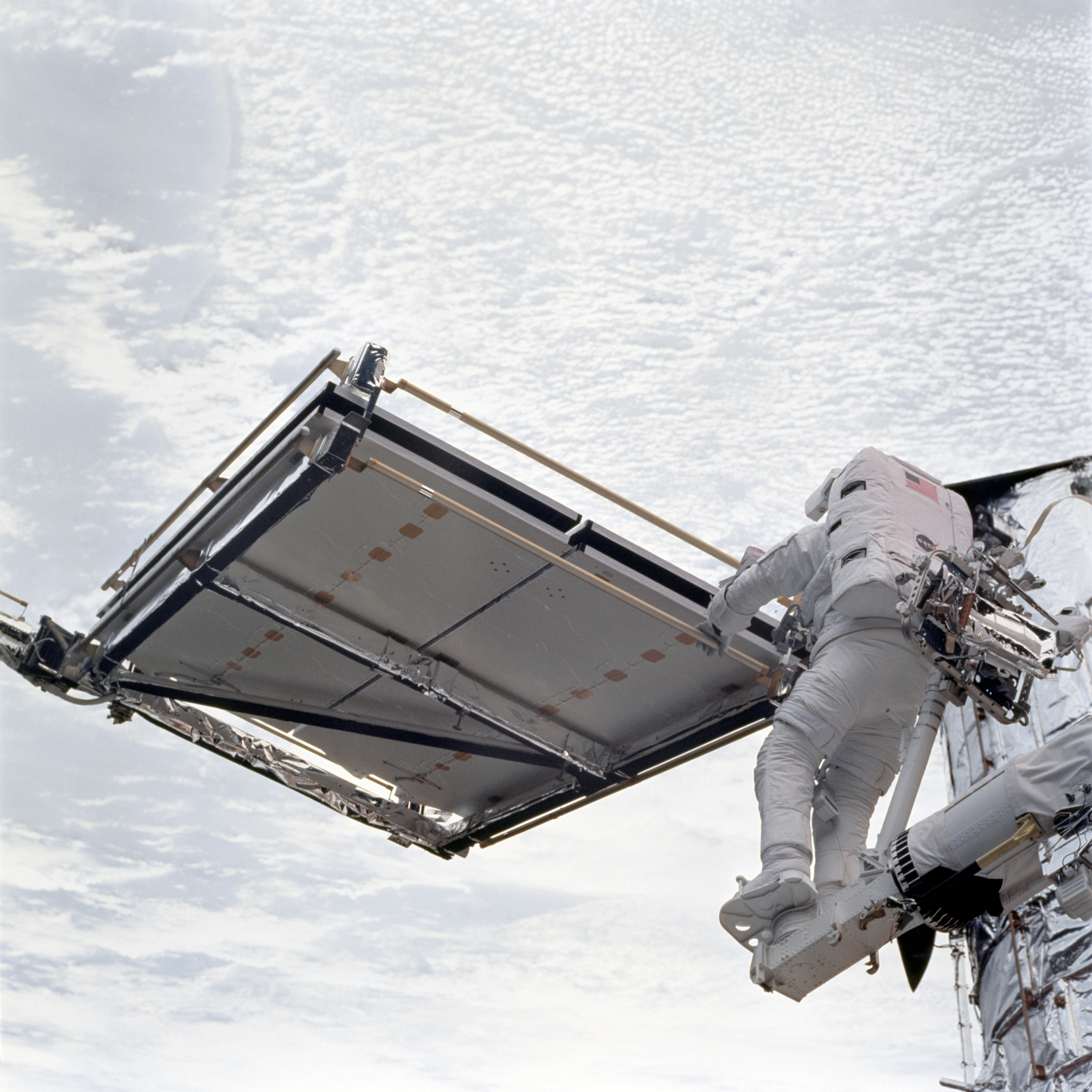
March 5, 2002 – Second Spacewalk
Astronauts James Newman and Michael Massimino finished installing new solar arrays on Hubble, which provided more power to the observatory. They also changed out one of Hubble's four Reaction Wheel Assemblies that use spin momentum to turn Hubble and keep it steady.
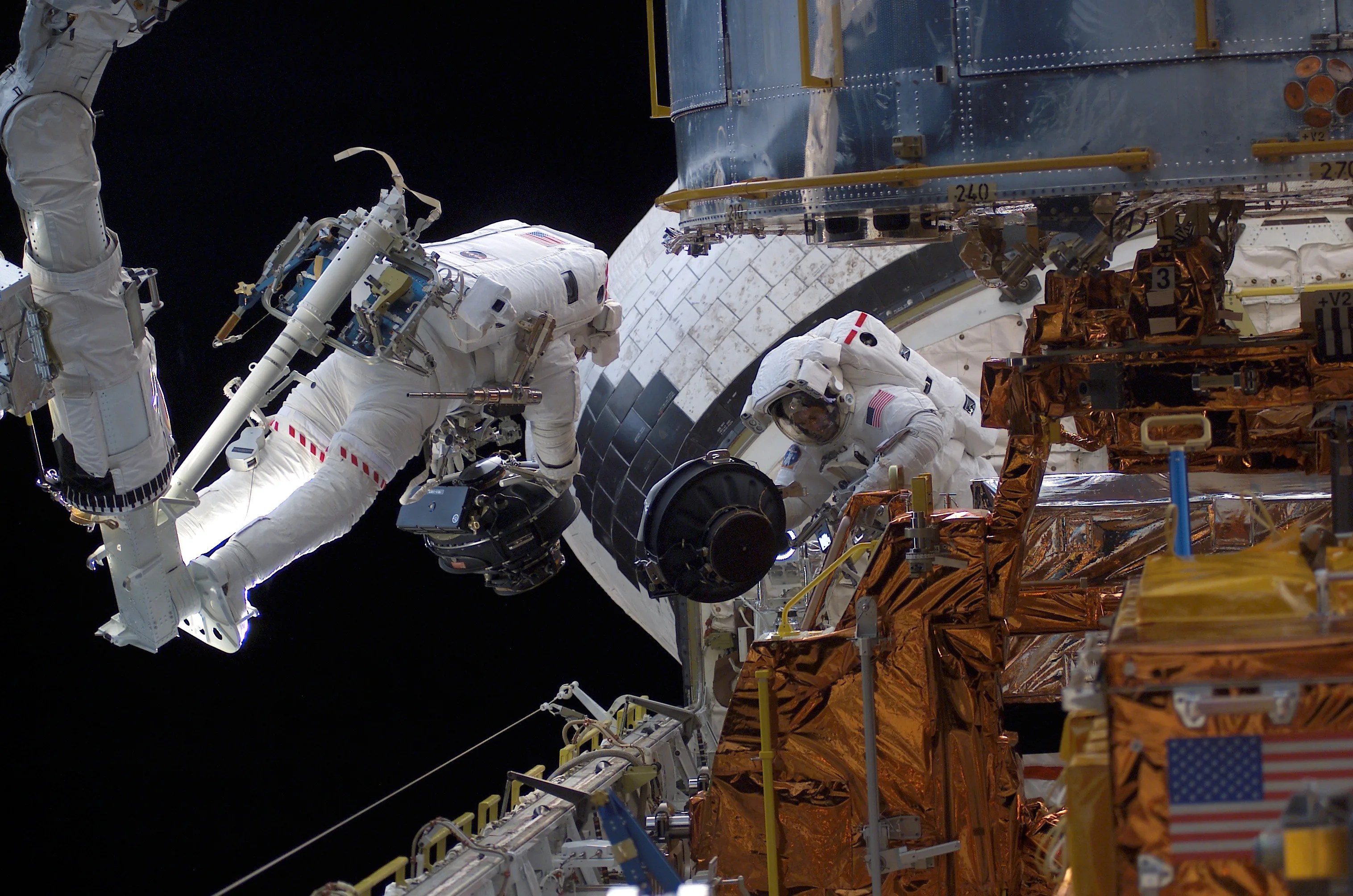
March 6, 2002 – Third Spacewalk
For the first time in Hubble's history, the telescope was completely powered down so that astronauts John Grunsfeld and Rick Linnehan could install a new Power Control Unit. This replacement PCU allows astronomers to take full advantage of extra power generated by the new solar arrays.
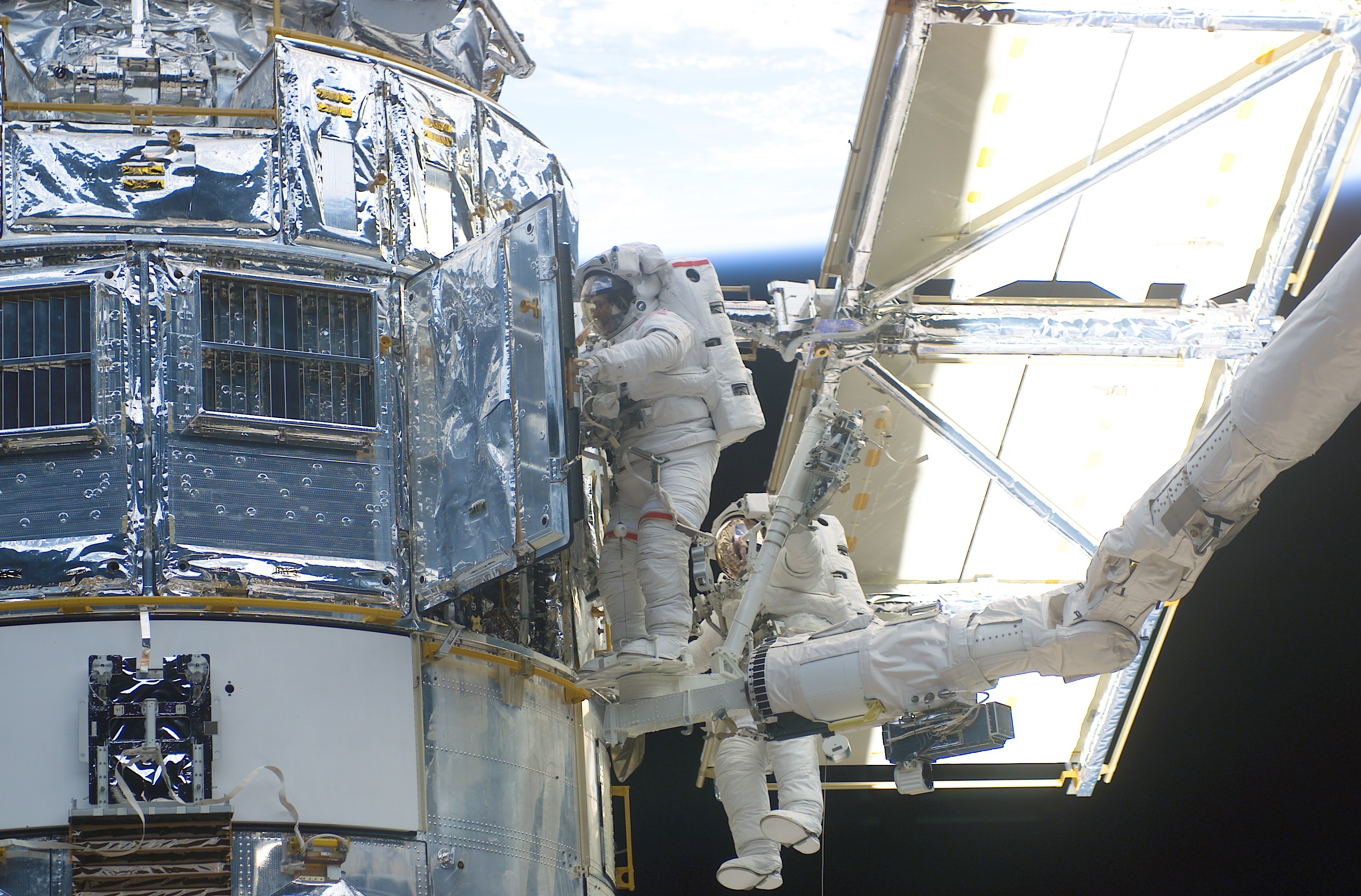
March 7, 2002 – Fourth Spacewalk
On the fourth spacewalk of the mission, the Advanced Camera for Surveys was installed by astronauts James Newman and Michael Massimino. This powerful instrument has delivered spectacular images of the universe and is expected to generate more discoveries for years to come.
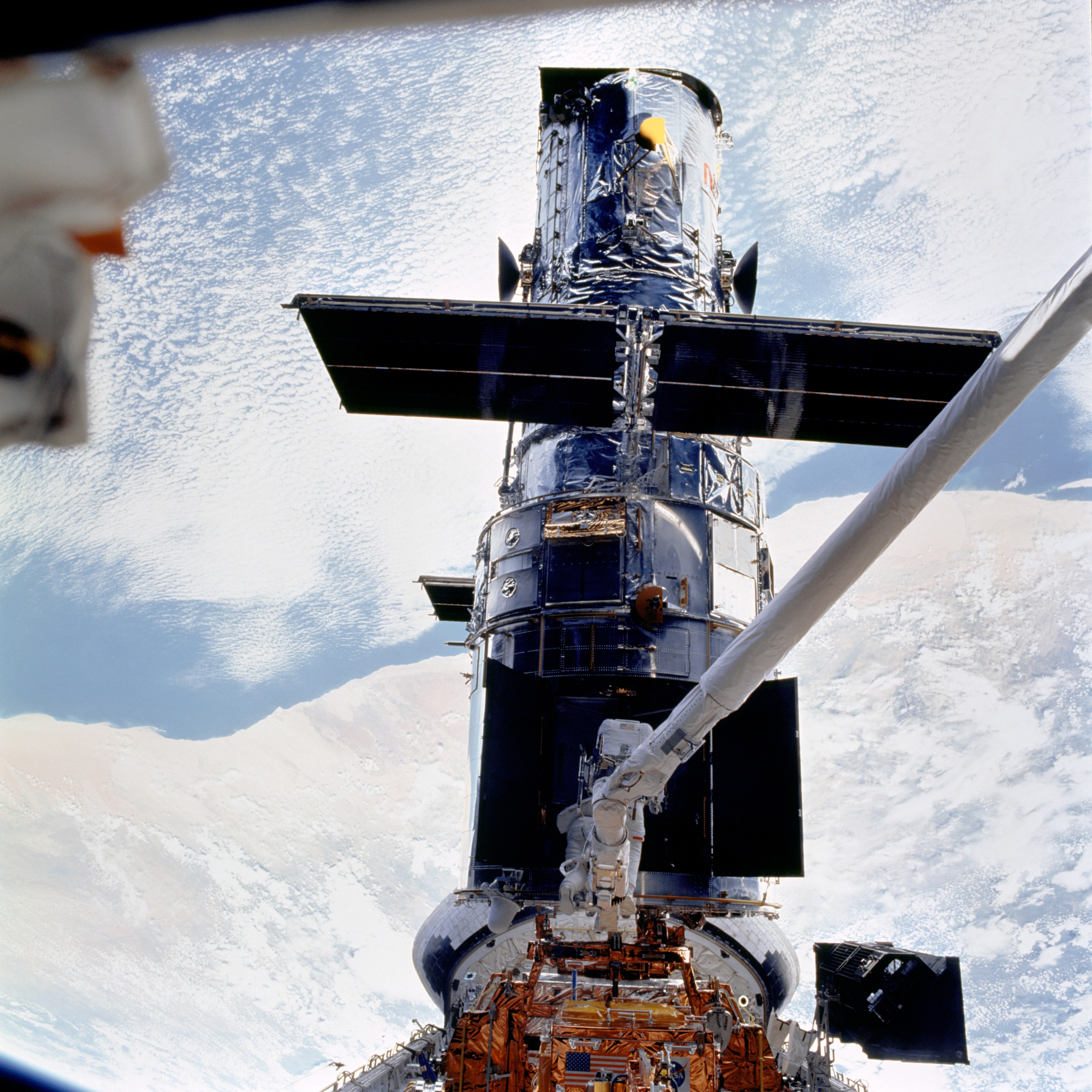
March 8, 2002 – Final Spacewalk
During the fifth and final spacewalk of the mission, the Near Infrared Camera and Multi-Object Spectrometer was revived by astronauts John Grunsfeld and Rick Linnehan with their completion of the installation of an experimental cooling system. NICMOS remained operational until 2008.
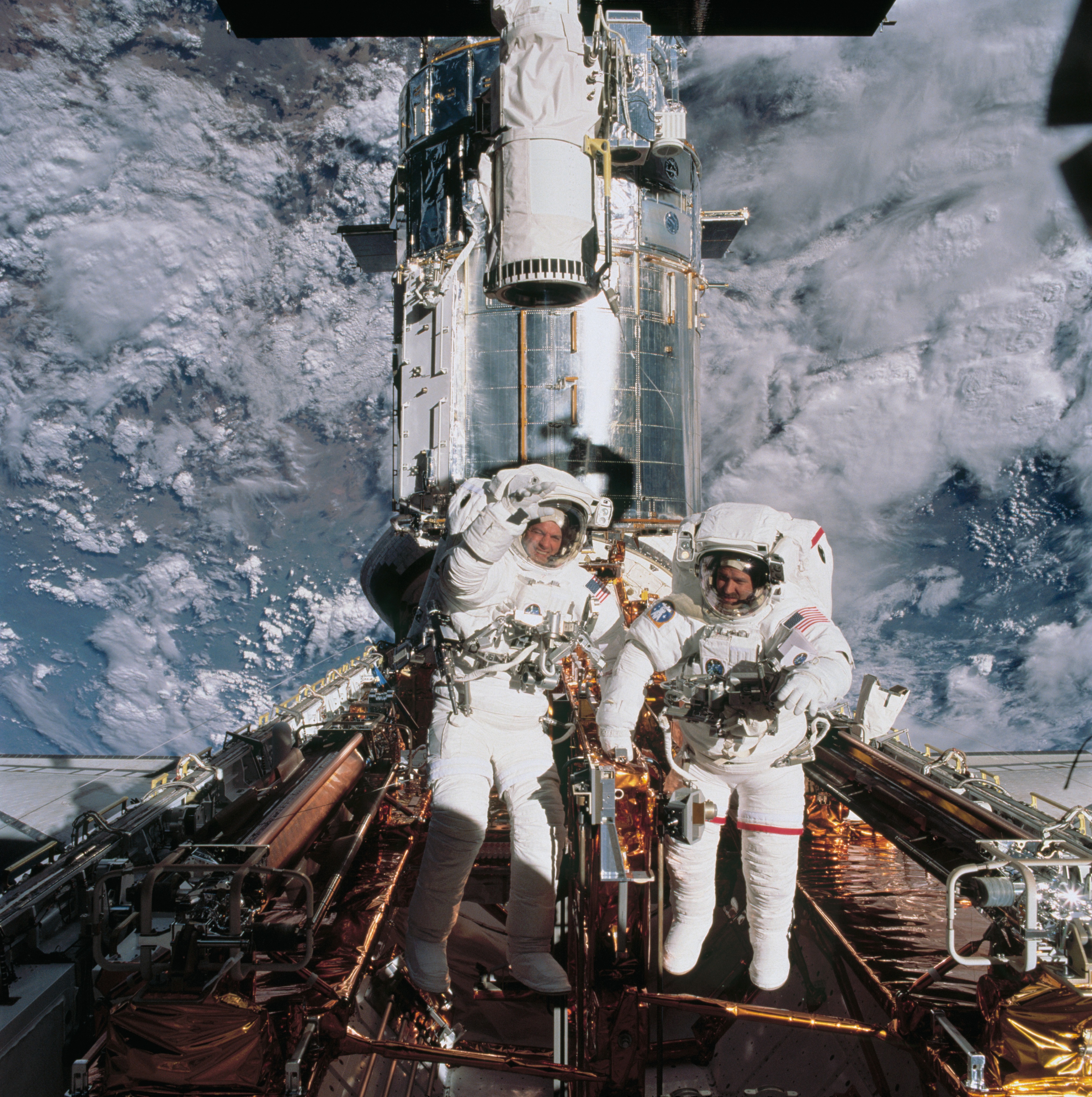
March 9, 2002 – Hubble Released Back Into Orbit
The crew of SM3B used Columbia's robotic arm to lift Hubble from the cargo bay and release it back into its orbit.
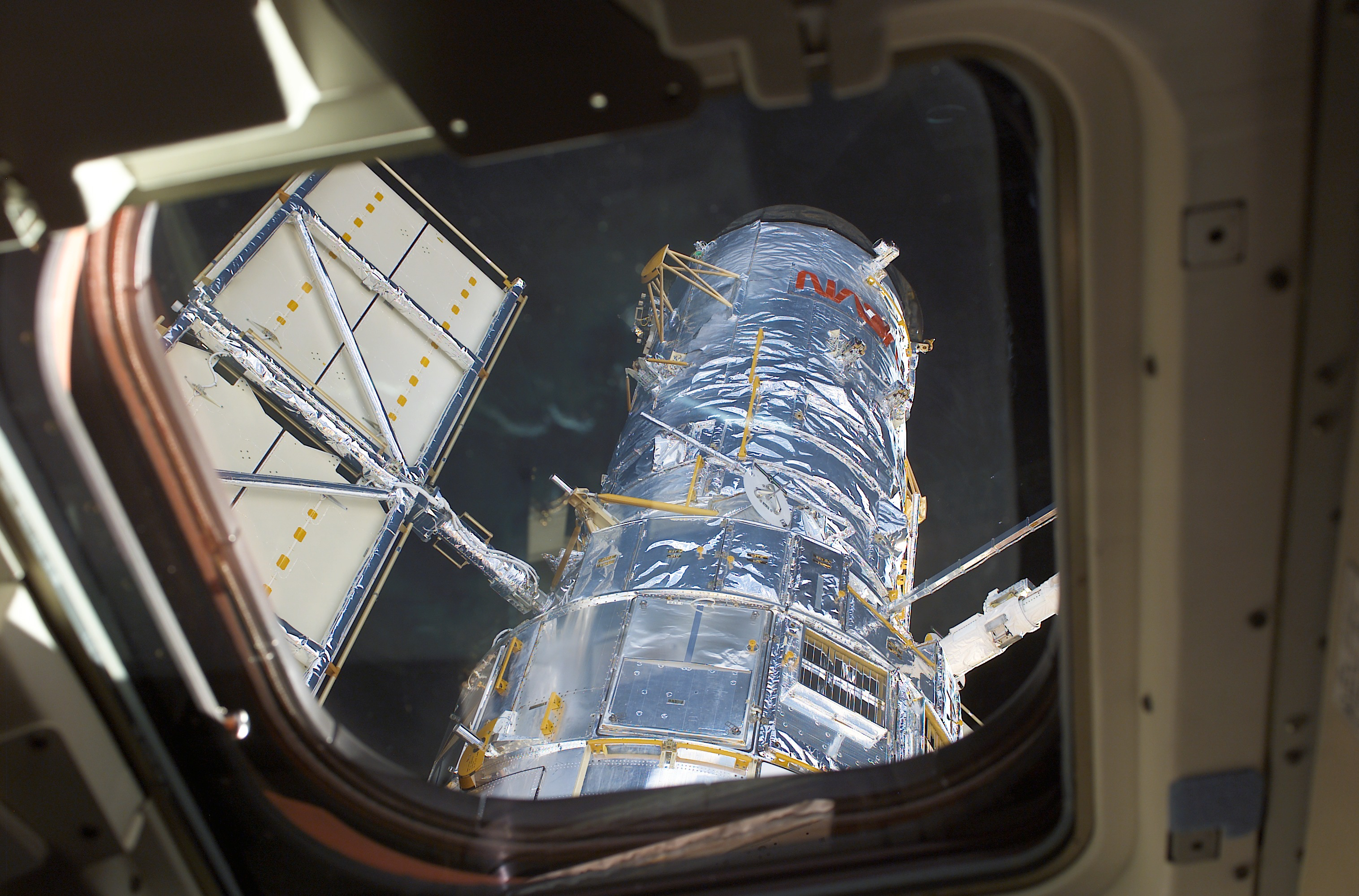
March 12, 2002 – Servicing Mission 3B Comes to a Close
The fourth servicing mission to Hubble came to a close as the Space Shuttle Columbia landed back at Kennedy Space Center at 4:33 a.m.
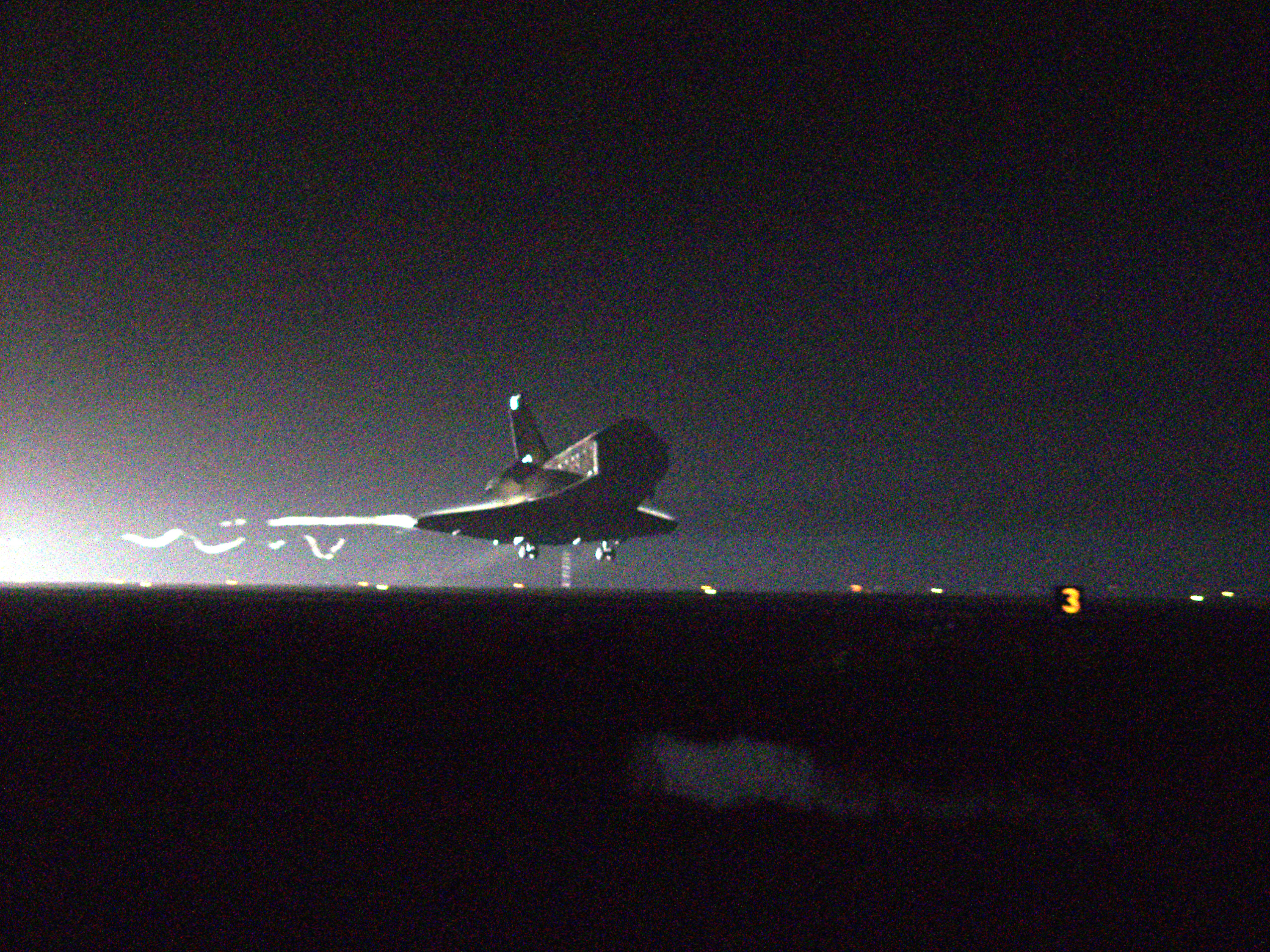
2004
January 16, 2004 – Servicing Mission 4 Cancelled
NASA Administrator Sean O'Keefe made the decision to cancel Hubble's Servicing Mission 4 due to safety concerns after the loss of the Space Shuttle Columbia.
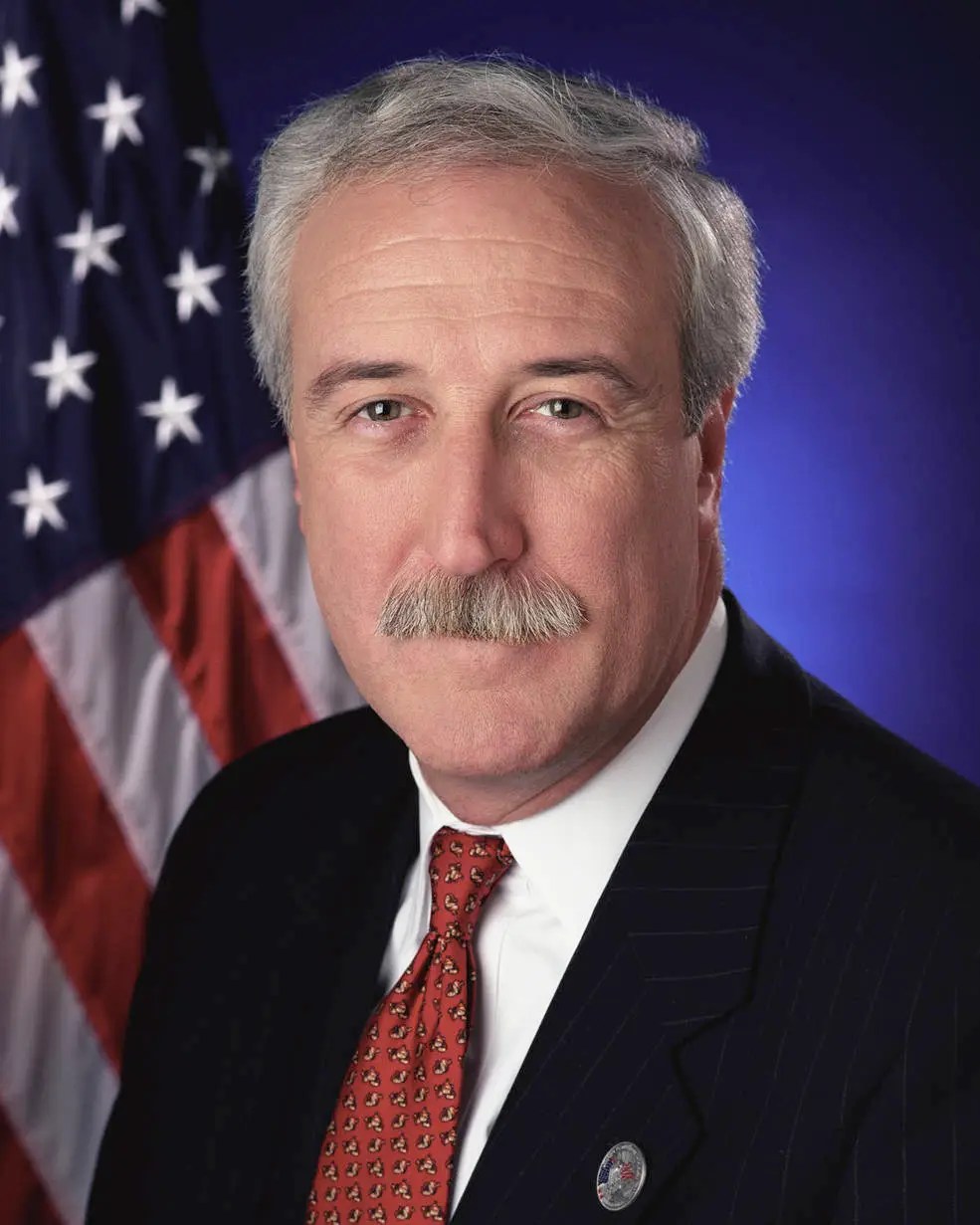
2006
October 31, 2005 – Servicing Mission 4 Reinstated
NASA Administrator Mike Griffin reinstated Servicing Mission 4 after safety concerns and risk mitigation were addressed. The mission was given an October 2008 launch date.

2008
September 27, 2008 – Servicing Mission 4 Delayed
A failure in the Science Instrument Command and Data Handler caused controllers to switch to a backup system. With no further redundancy in the unit, Servicing Mission 4 was delayed until May 2009 when a replacement unit could be added to the manifest.
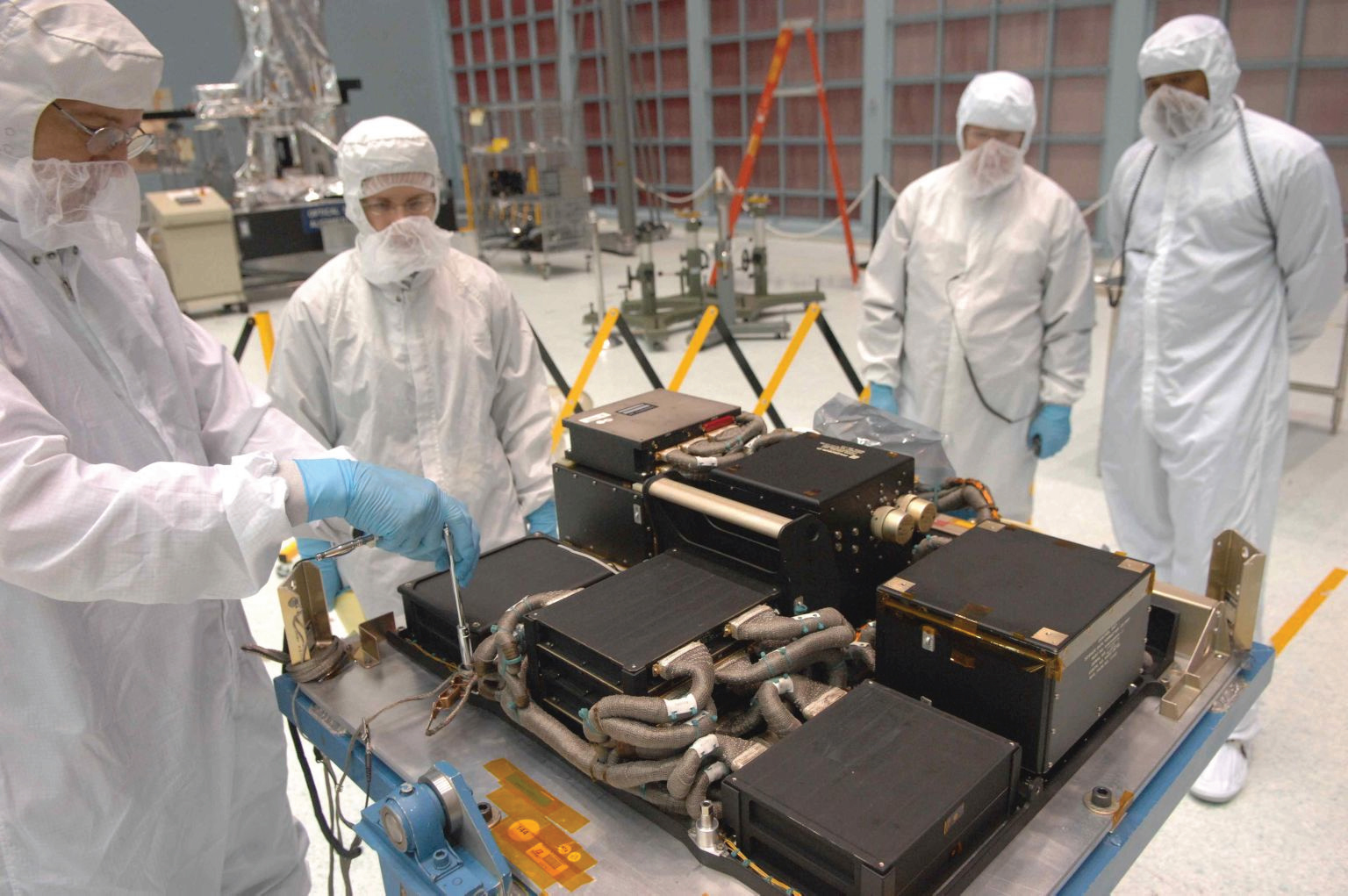
2009
Servicing Mission 4
May 11-24, 2009
The Hubble Space Telescope was reborn with Servicing Mission 4 (SM4). The fifth and final serving mission left the observatory at the peak of its scientific capability, and prepared it for many years of further scientific discovery.
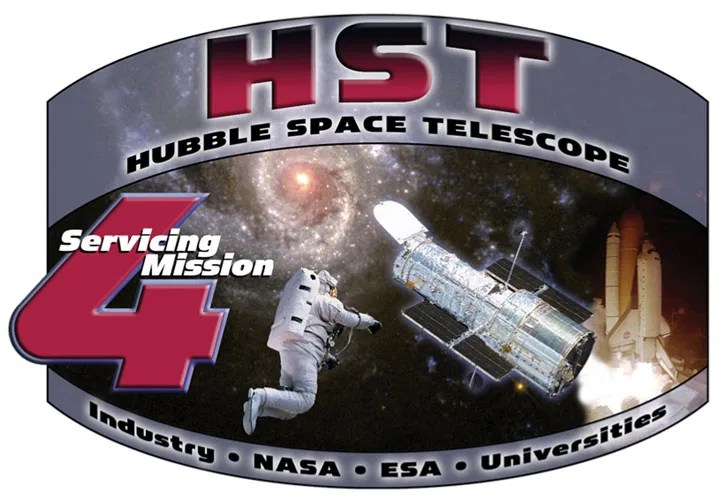
May 9, 2009 – Launch of Servicing Mission 4
At 2:01 p.m. ET, the Space Shuttle Atlantis launched from Kennedy Space Center in Florida with seven astronauts aboard.
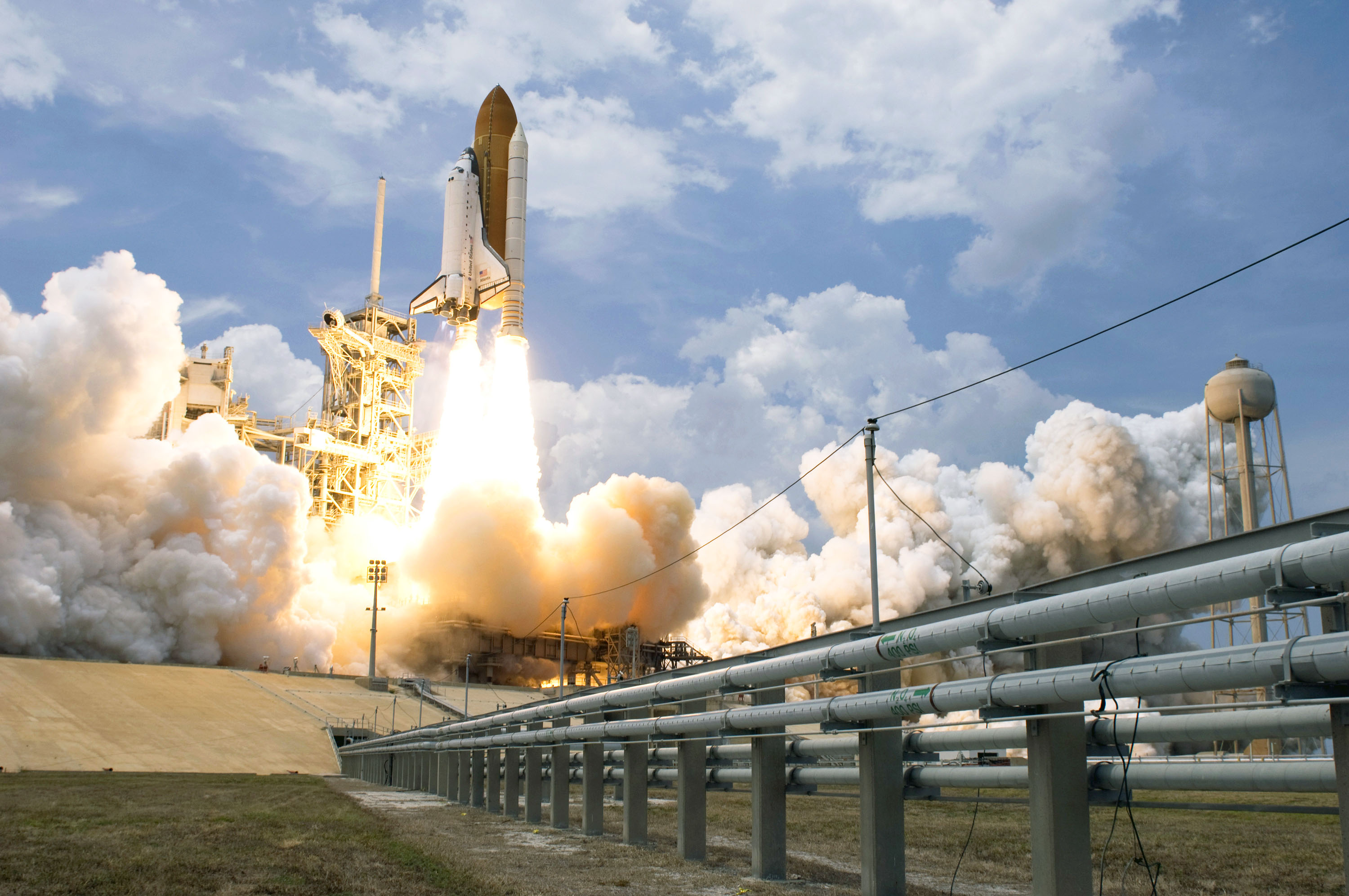
May 13, 2009 – Hubble Captured and Secured in the Cargo Bay
The crew used Atlantis's robotic arm to gently dock Hubble in the shuttle’s cargo bay so that the astronauts could work on the telescope.
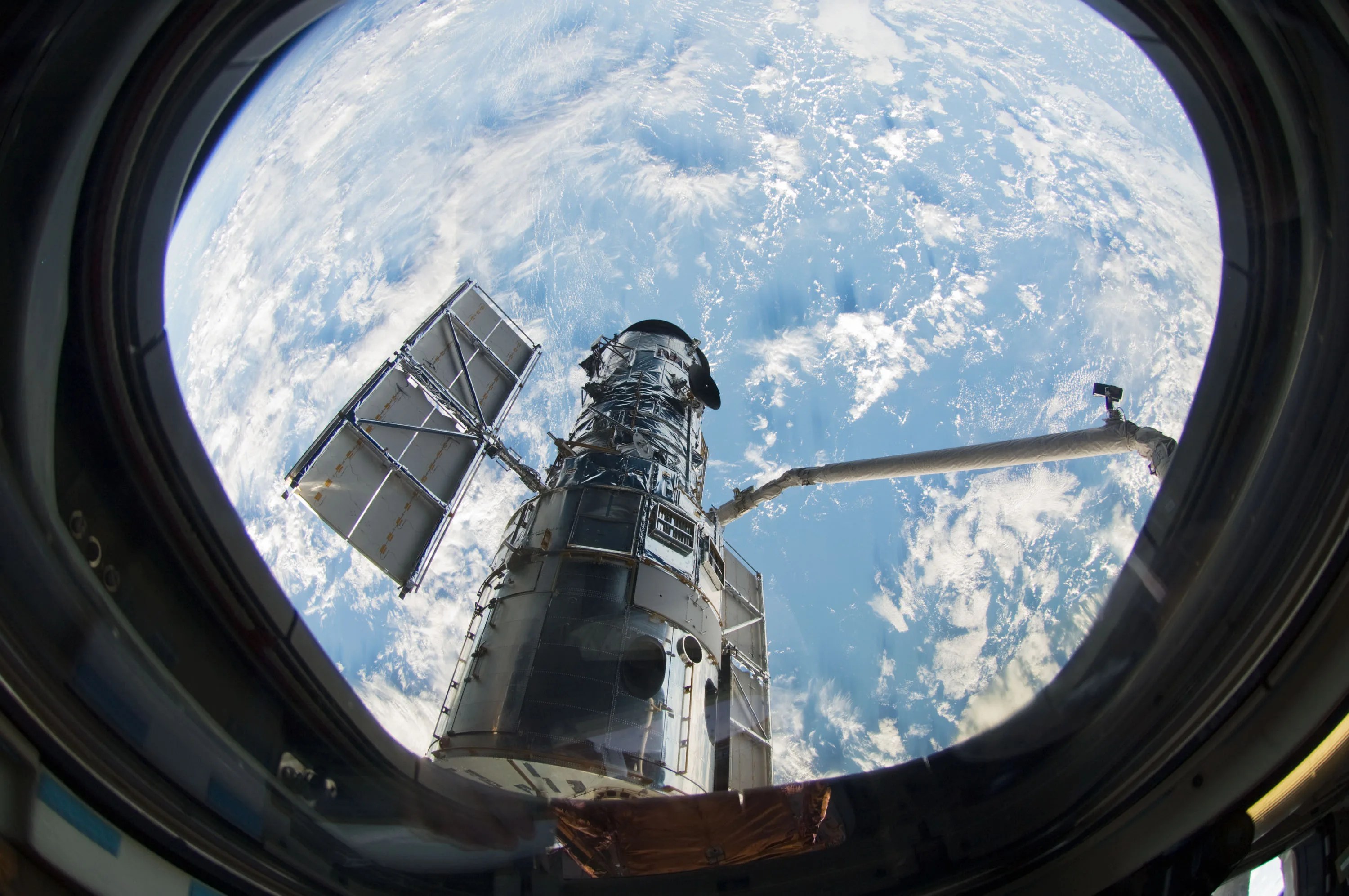
May 14, 2009 – First Spacewalk
Astronauts John Grunsfeld and Andrew Feustel replaced Hubble's Wide Field and Planetary Camera 2 with Wide Field Camera 3, in addition to other repairs. A mechanism for a spacecraft or propulsion module to capture Hubble for de-orbit at the end of the telescope's life was also activated. The replacement Science Instrument Command and Data Handling System that coordinated instruments and formats the data for transmission to the ground was also installed.
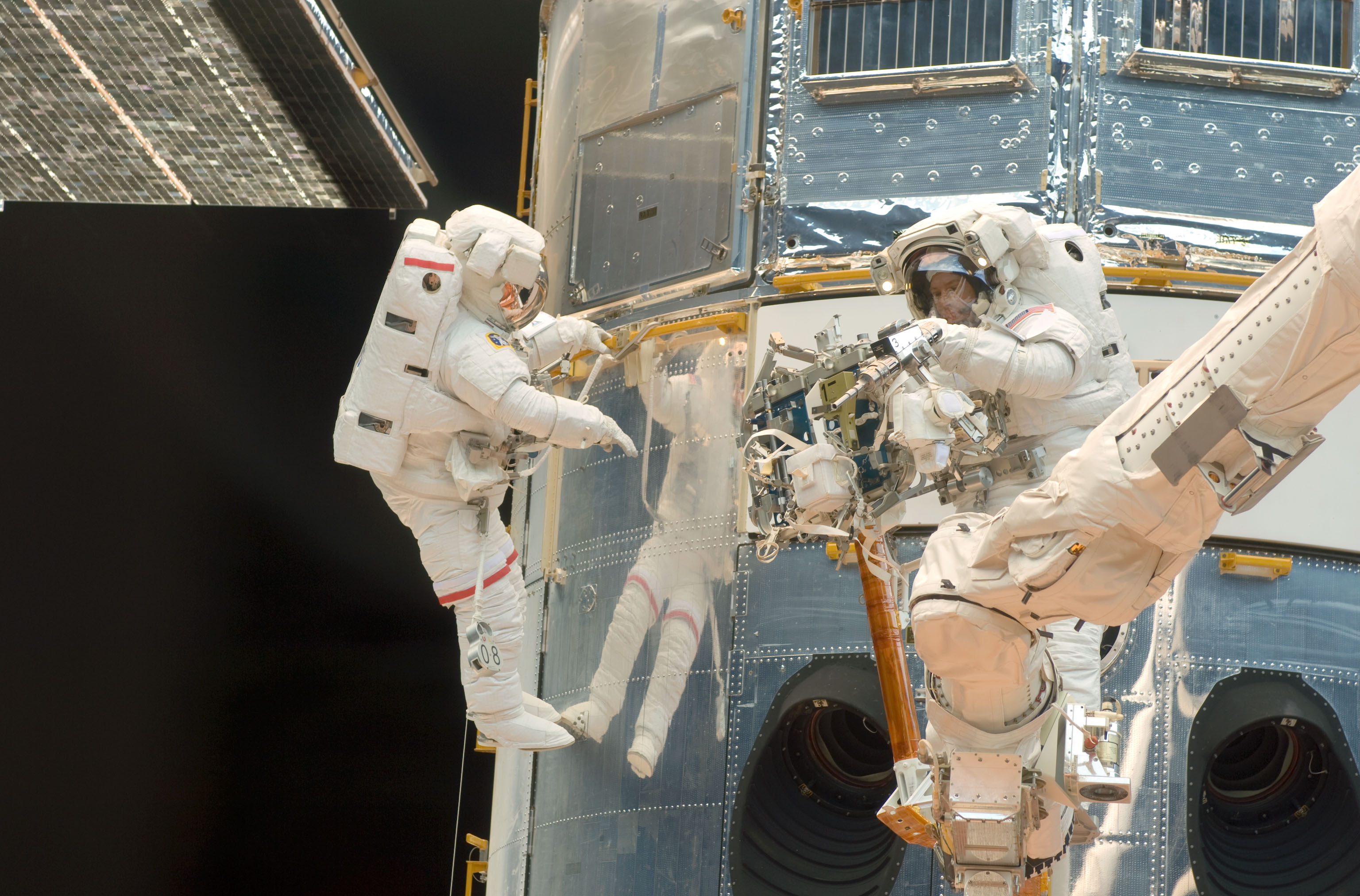
May 15, 2009 – Second Spacewalk
Astronauts Michael Massimino and Michael Good removed and replaced all three of Hubble's gyroscope rate sensing units, along with the first of two battery unit modules.
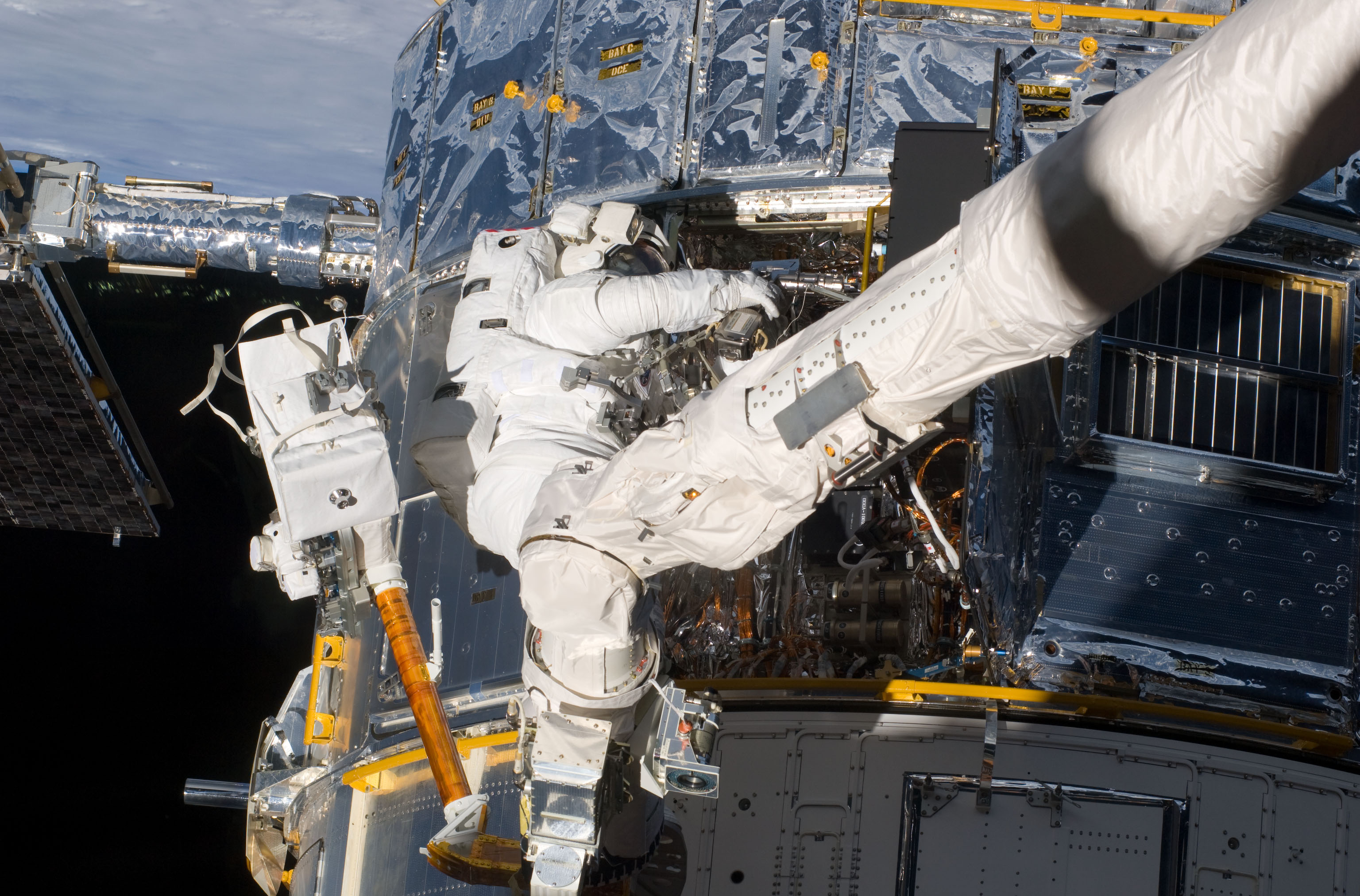
May 16, 2009 – Third Spacewalk
Astronauts John Grunsfeld and Andrew Feustel installed the Cosmic Origins Spectrograph, the most sensitive ultraviolet spectrograph ever planned to fly on Hubble, and also performed repairs to the Advanced Camera for Surveys.
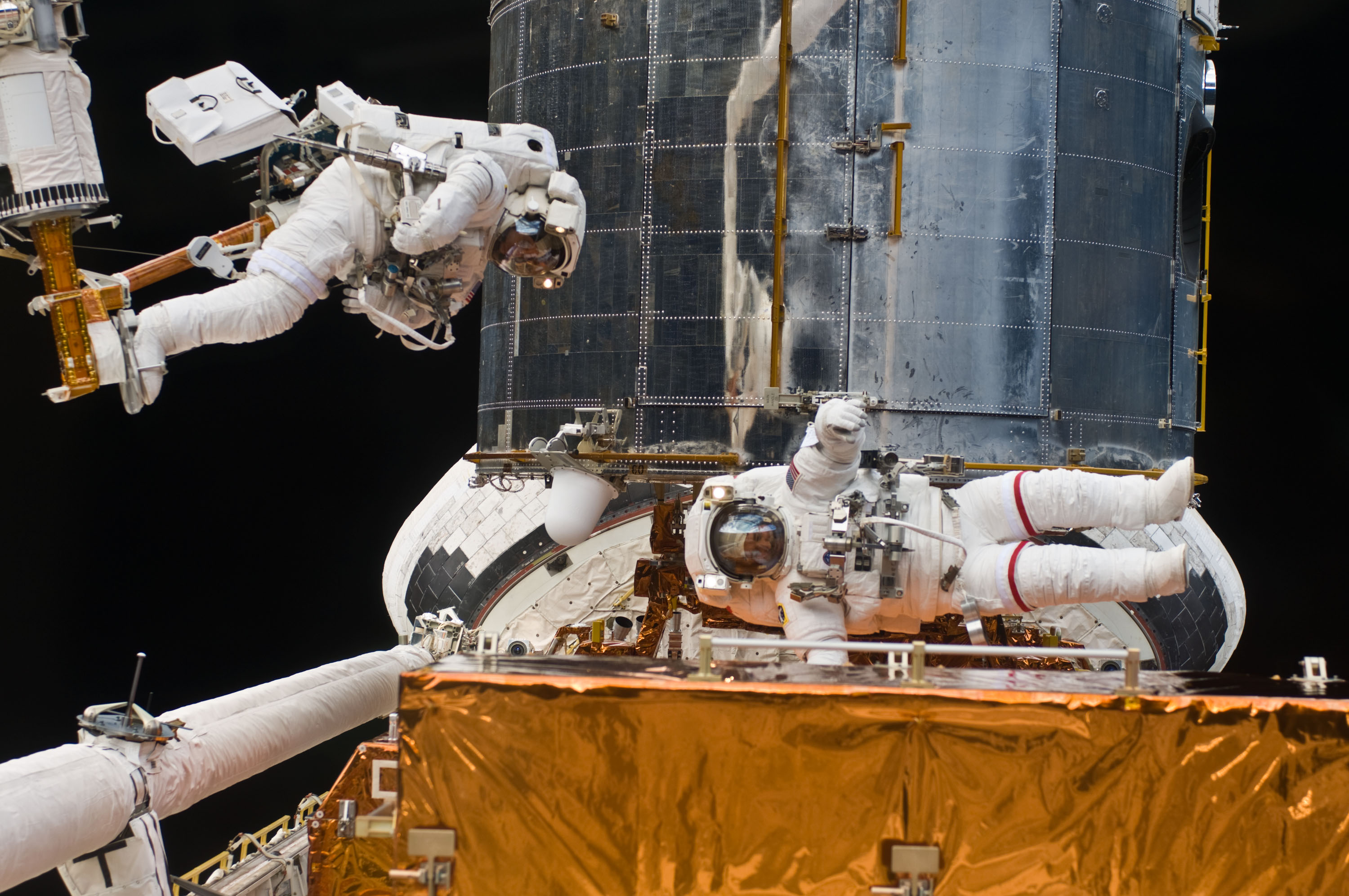
May 17, 2009 – Fourth Spacewalk
On the fourth spacewalk, astronauts Michael Massimino and Michael Good replaced an electronics card on the Space Telescope Imaging Spectrograph to restore it to operational status.
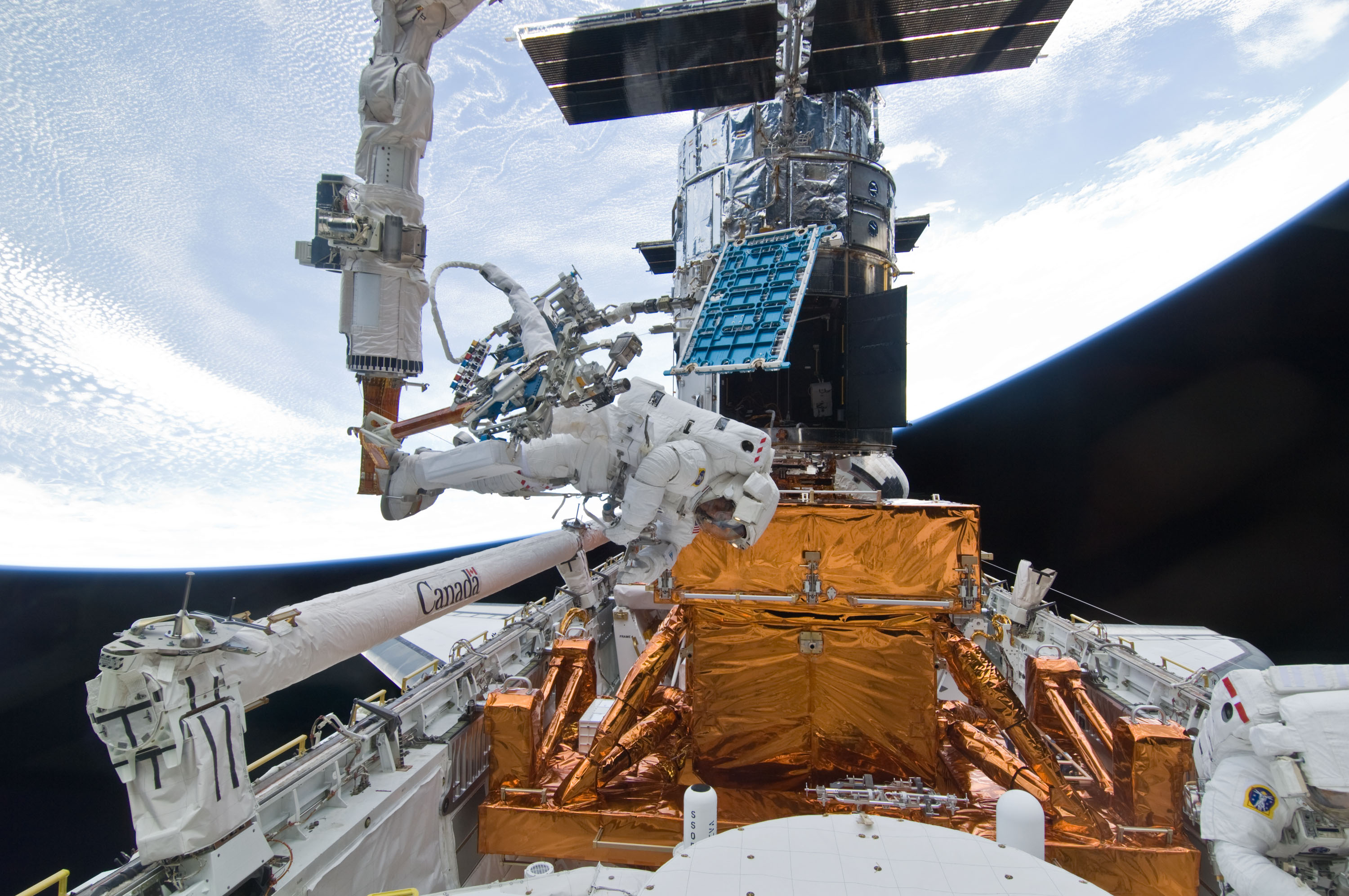
May 18, 2009 – Final Spacewalk
Astronauts Andrew Feustel and John Grunsfeld completed the final spacewalk to service Hubble. They made several repairs to the observatory, including the installation of the second battery module, a refurbished Fine Guidance Sensor, and New Outer Blanket Layers, which provide thermal protection to equipment bays whose thermal insulation had been degraded by space.
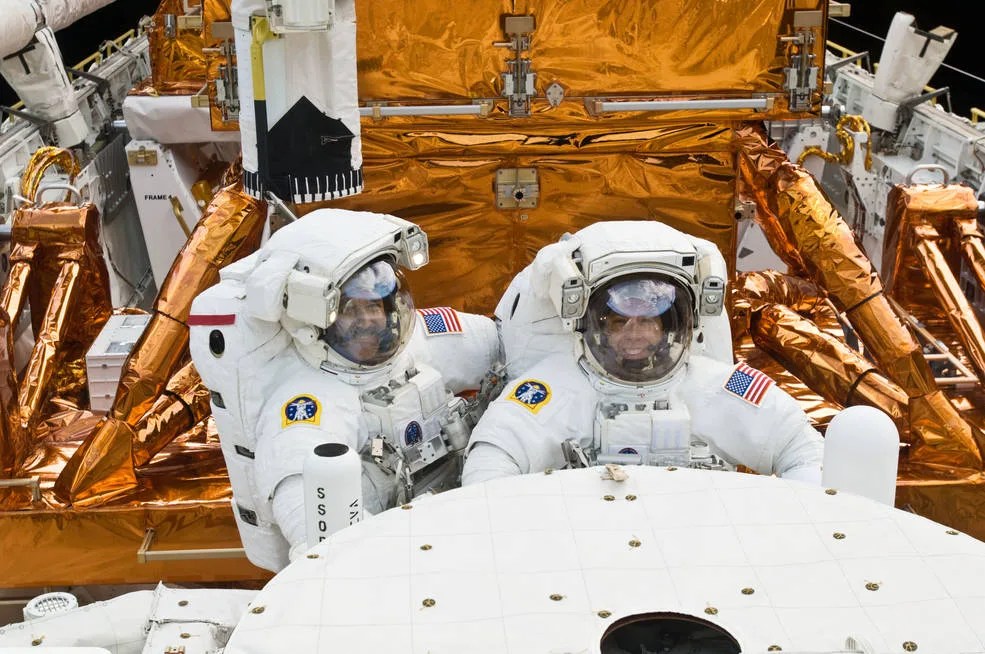
May 19, 2009 – Hubble Released Back Into Orbit
After five spacewalks, Hubble was released from the cargo bay of the Space Shuttle Atlantis.
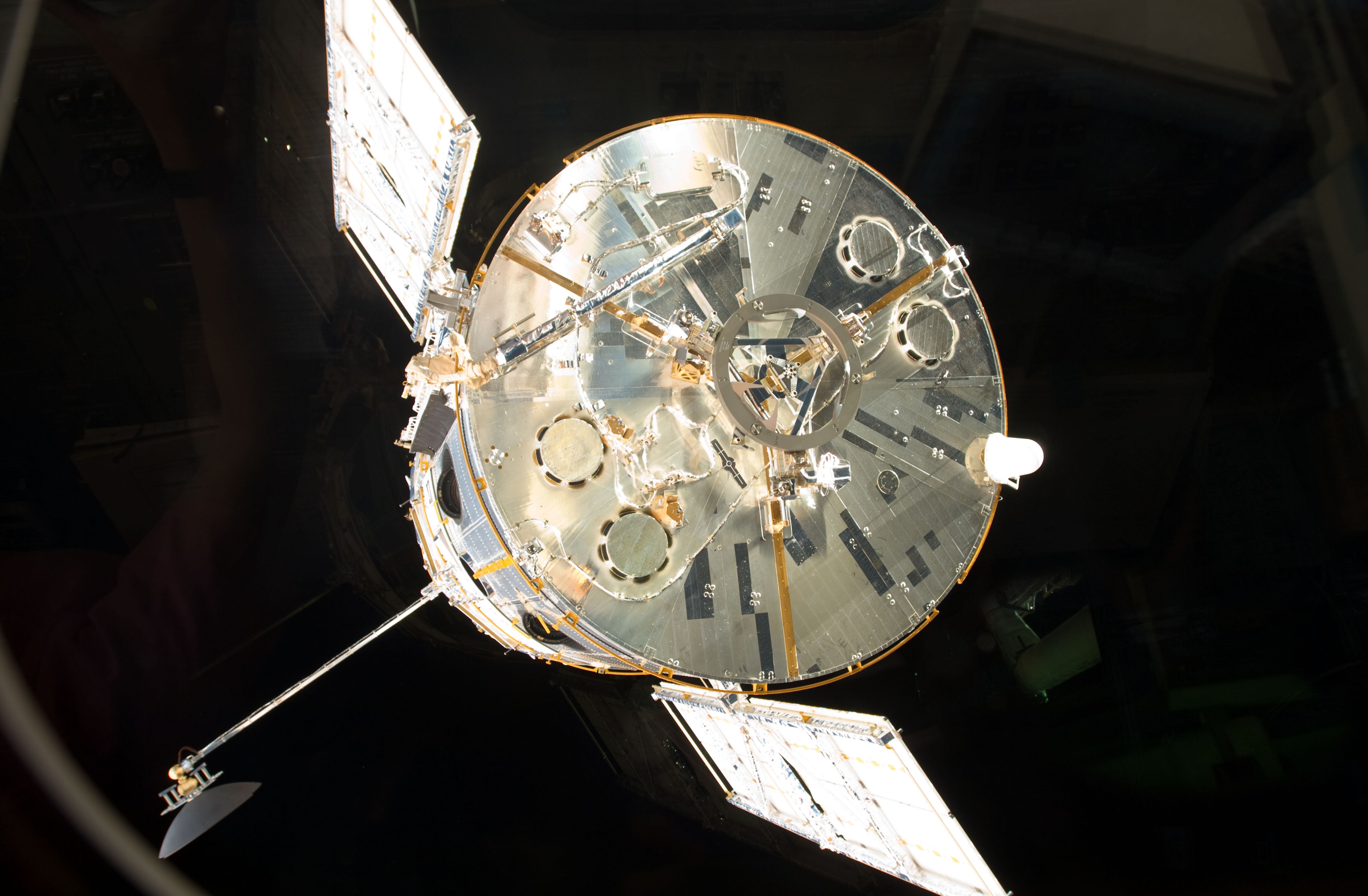
May 24, 2009 – Servicing Mission 4 Comes to a Close
The final servicing mission to Hubble ended as the Space Shuttle Atlantis safely landed at Edwards Air Force Base in California.
